Liberty University BIOL 418 - Fish Exam
1/144
There's no tags or description
Looks like no tags are added yet.
Name | Mastery | Learn | Test | Matching | Spaced |
|---|
No study sessions yet.
145 Terms
Bowfin Family
Amiidae
- one living species
- survivor of early primitive group
- retain lot of cartilage in skeleton
- bony plates covering skull
Bowfin features
- modified heterocercal caudal fin
- cycloid scales
- "eyespot" on tail
- live in stagnant water
- short anal fin
Bowfin
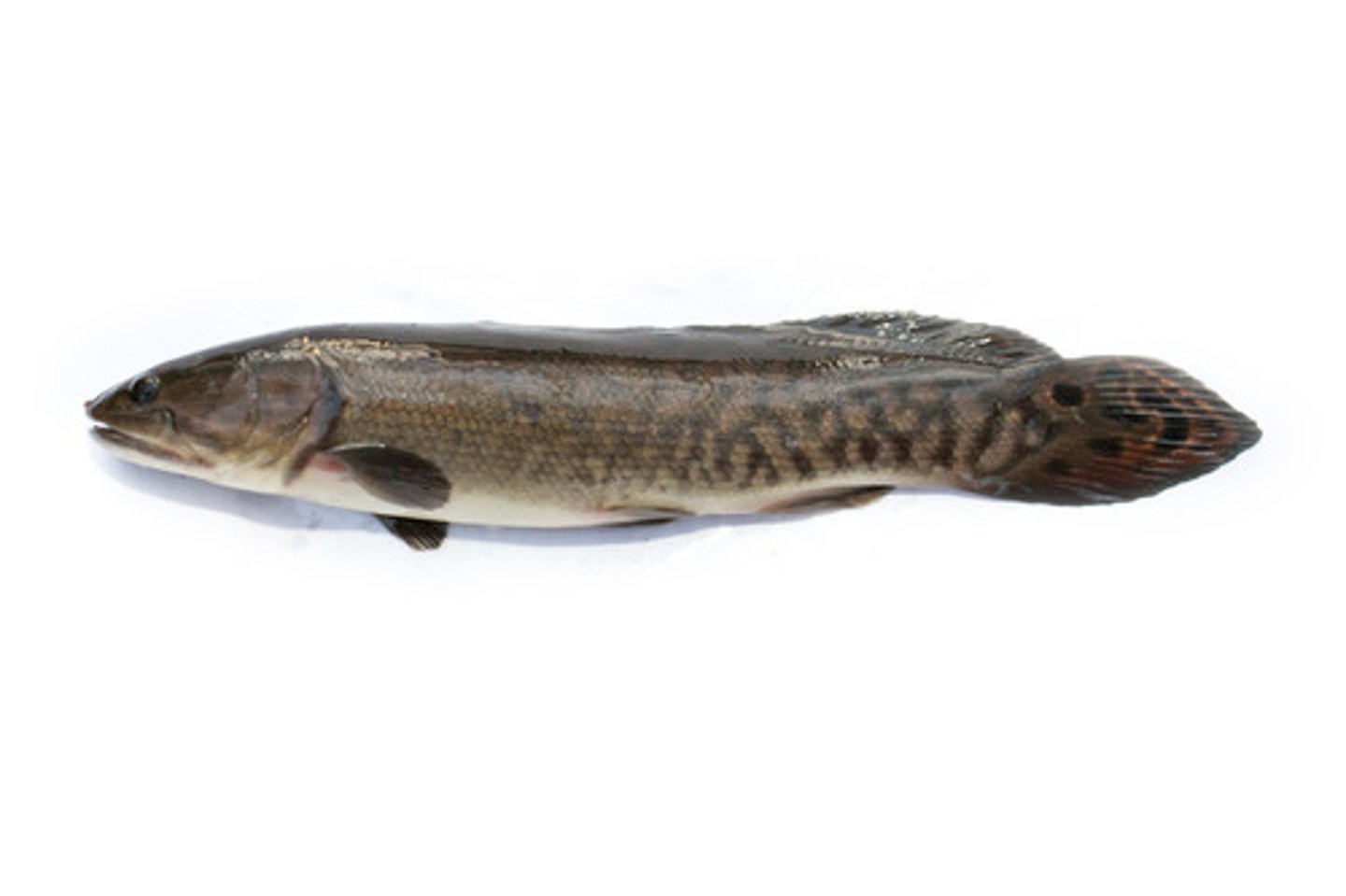
Gar Family
Lepisosteidae
- long cylindrical bodies
- considered primitive
- large amounts of cartilage + bony plates
- long jaws with sharp teeth
Lepisostediae breeding
- spawn in spring
- lay eggs at random
- eggs are toxic to warm-blooded vertebrates
Longnose Gar features
- large elongated fish
- dorsal and anal fins far back on body
- broad dark strip though eye down lateral line
Longnose Gar
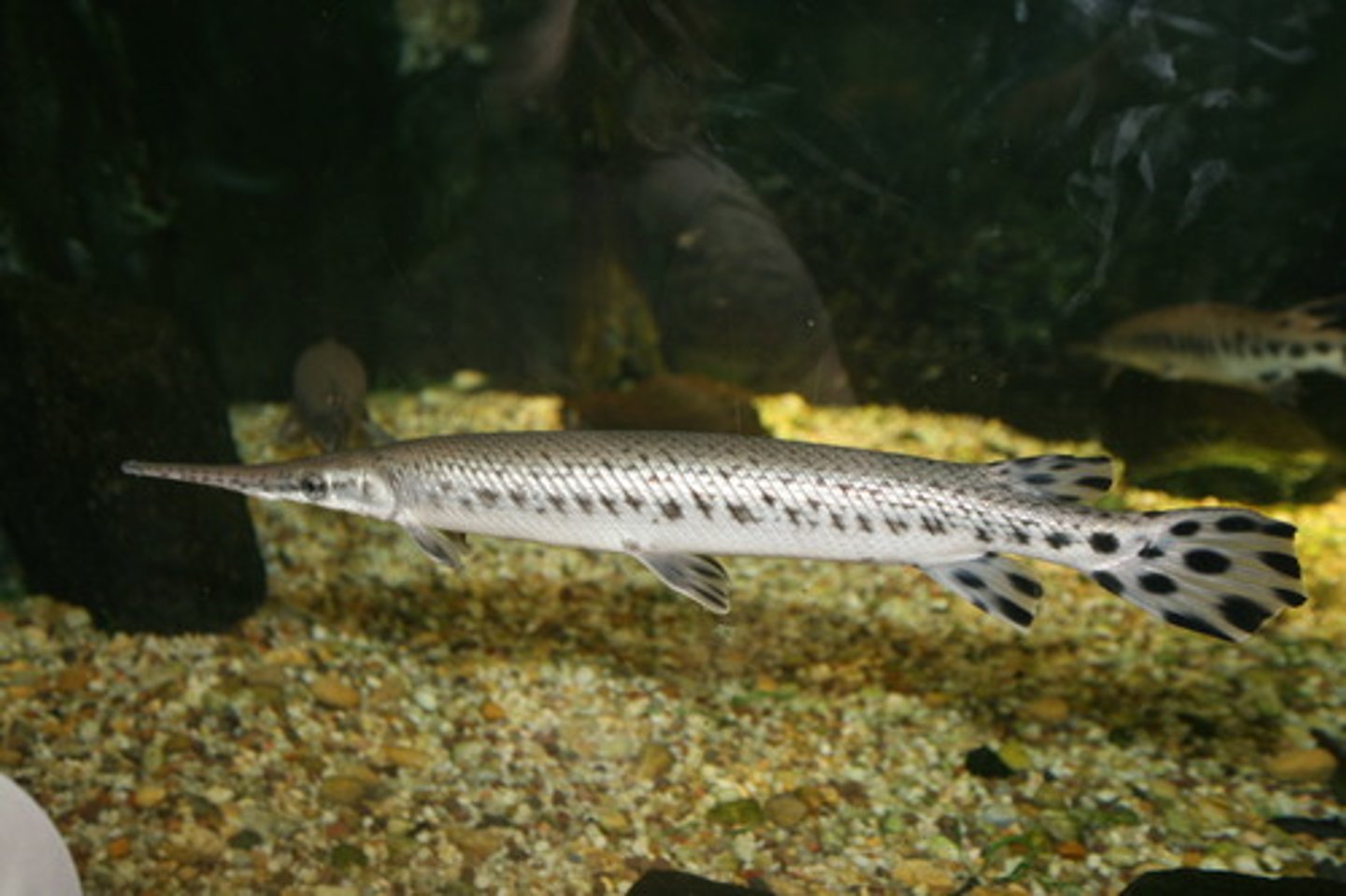
Eel Family
Anguillidae
- single species
- enters brackish water along coast and rivers often penetrating to headwaters
American Eel features
- scales are minute and embedded in skin
- pelvic fins absent
- dorsal fin is very long
- catadromous (live in freshwater, migrate to Sargasso Sea to breed)
- lay up to ten million eggs
- onmivorous
- nocturnal
- throughout VA
American Eel
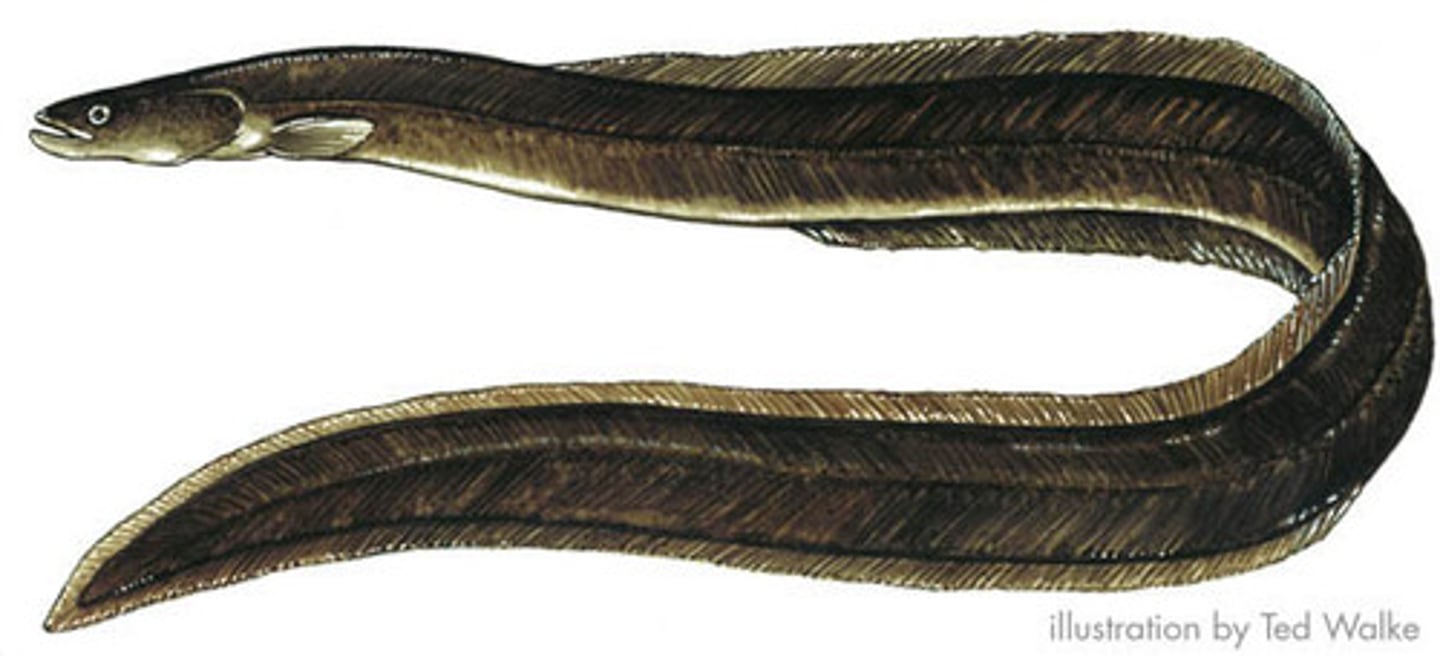
Salmon Family
Salmonidae
- gamefish
- adipose fins
- axillary process at base of each pelvic fin
- cold water fish
- predaceous
- some anadromous
Rainbow Trout features
- stocked in montane habitats
- wide pink, red, or purple band on side
- black spots
- small forested springs
- cold water
Rainbow Trout
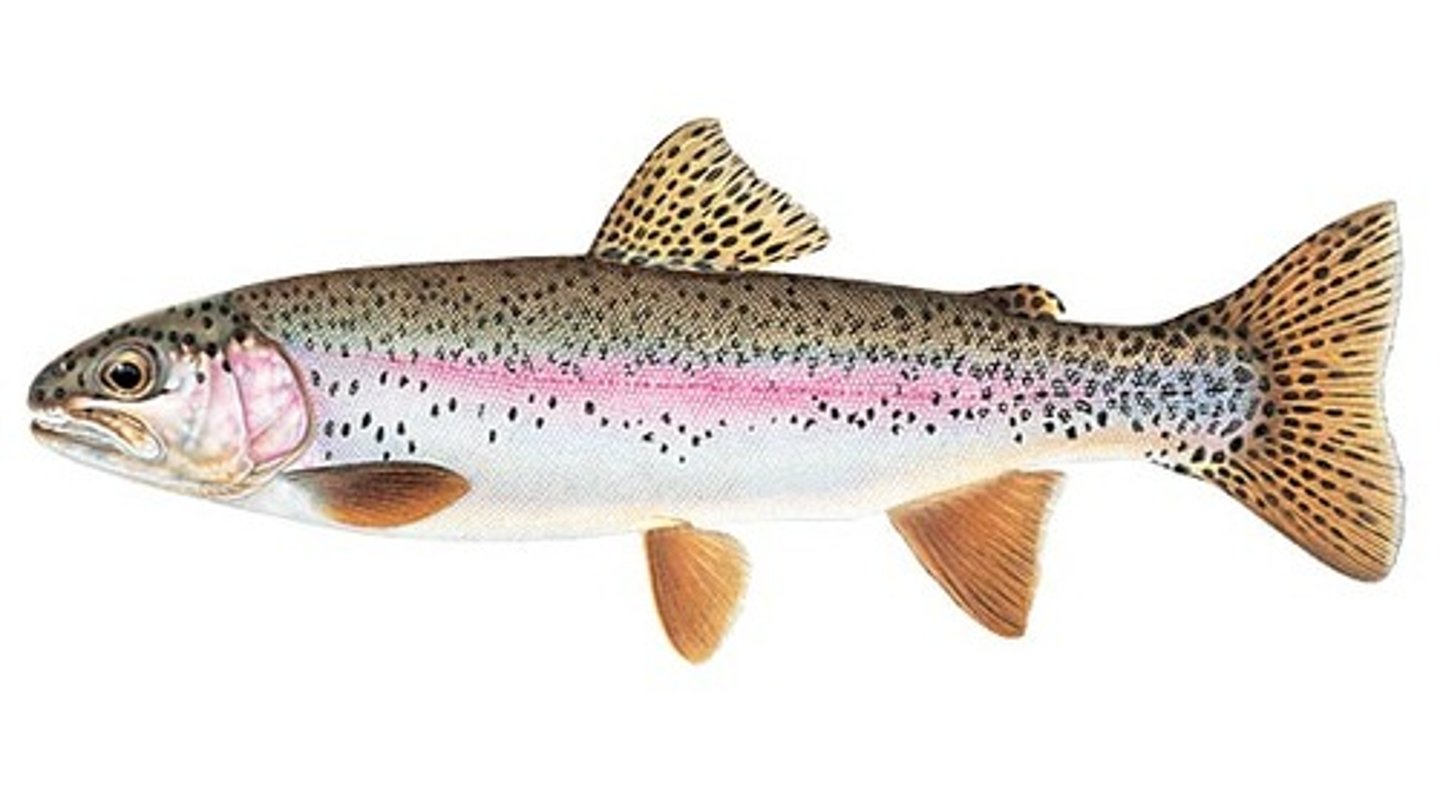
Brown Trout features
- stocked in montane areas
- orange to red spots with lighter ring around
- breeds October to December
- cool streams and creeks
- found in warmest water of trout species
Brown Trout
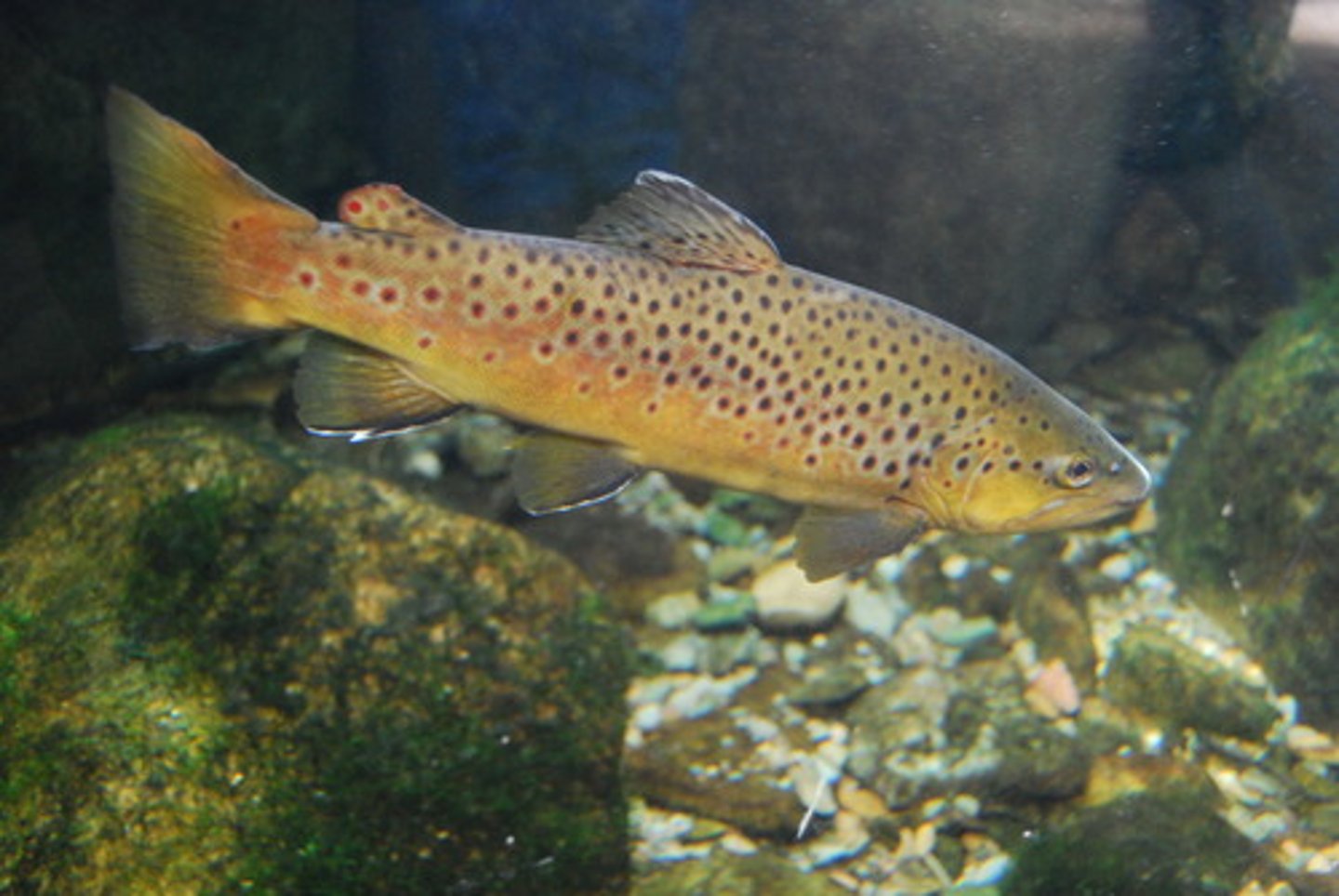
Brook Trout features
- native and stocked
- dorsal fin spotted with black
- lower fins with pale anterior margin bordered by black
- breeding season is late Oct. to Nov.
- rocky mountain creeks and small streams
Brook Trout
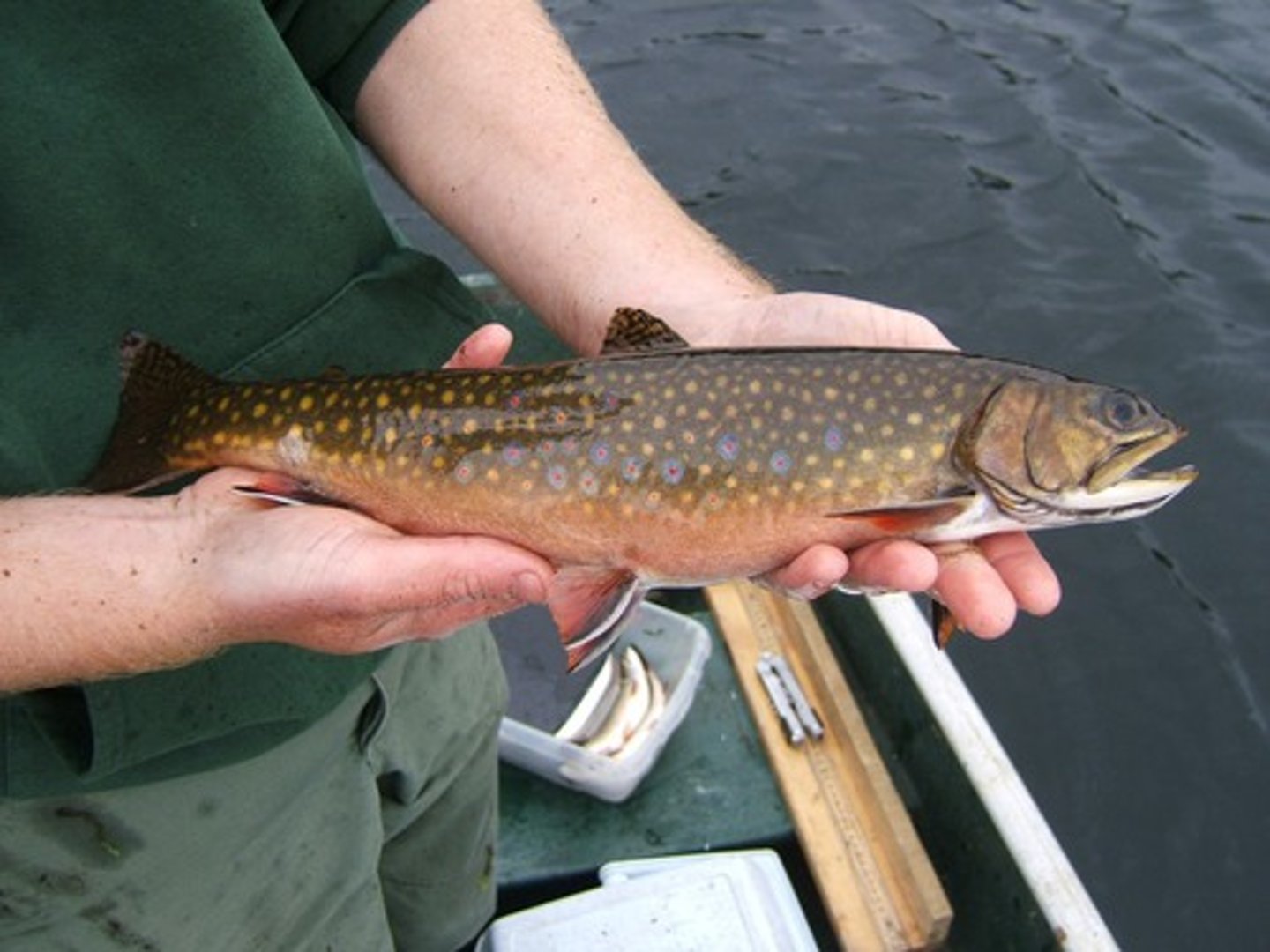
Minnow Family
Cyrpinidae
- largest freshwater fish family (25% of species)
- lack spines
- breeding tubercles on males occur
- strictly freshwater
- most are random spawners
Central Stoneroller features
- high-backed minnow with ventral mouth
- dorsal and anal fins with a black band
- lower jaw has hard ridge
- males dig pits for nests and defend them
- clear streams in Montane habitats
- tubercles on head and dorsum
Central Stoneroller
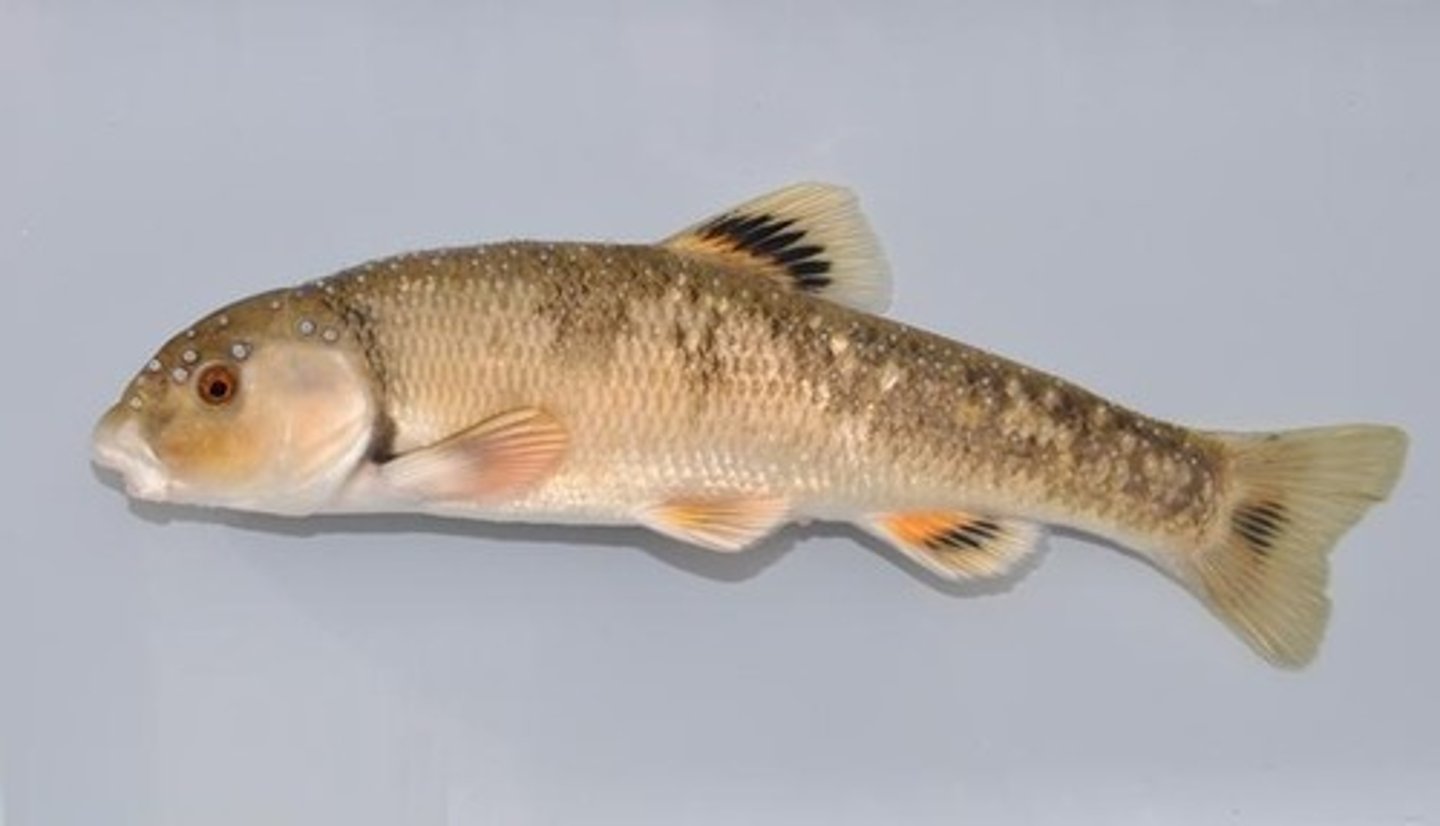
Goldfish features
- throughout VA
- dorsal fin has a long base
- gold or silver
Goldfish
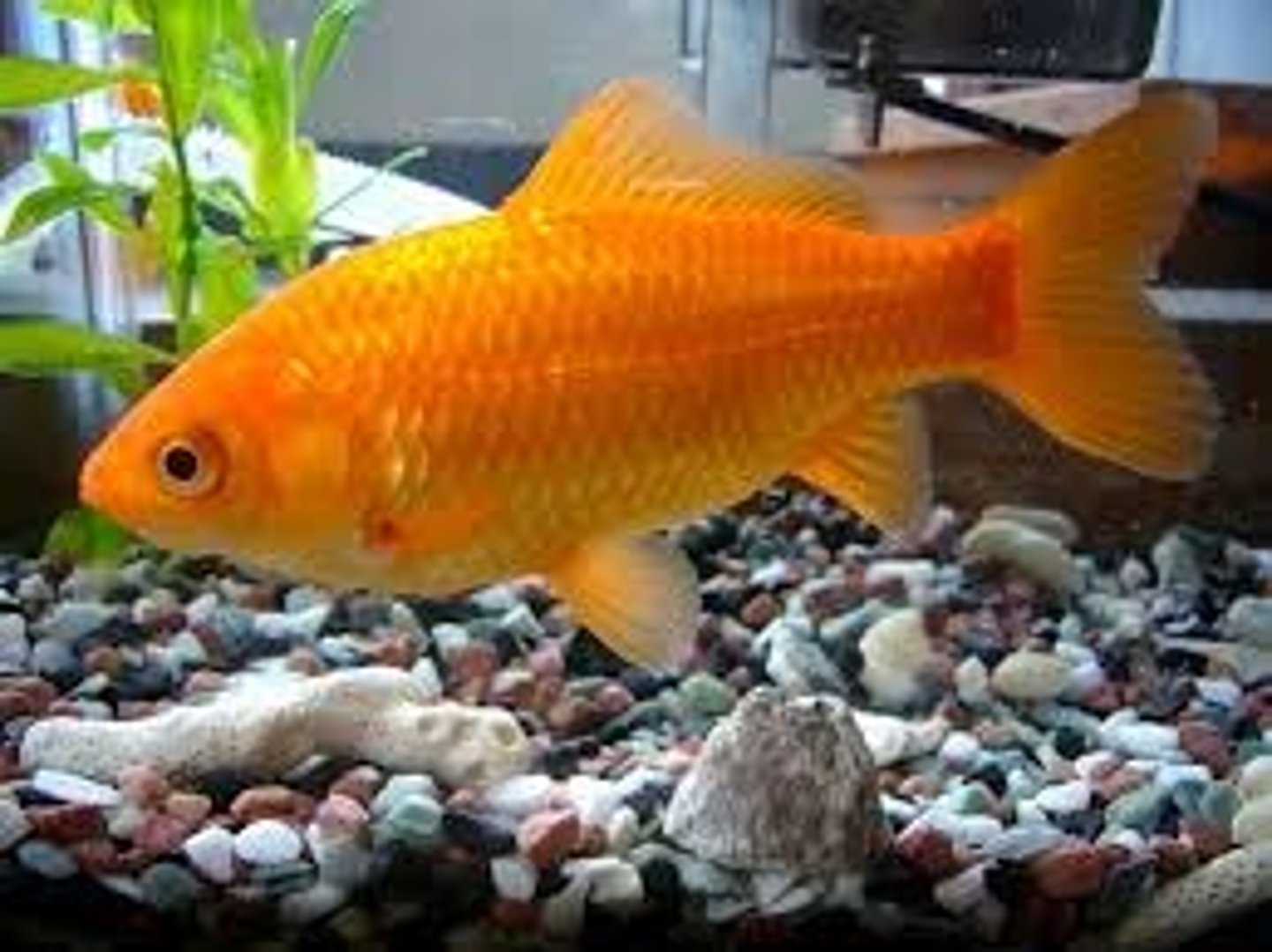
Rosyside Dace features
- slight rosy tinge on the side, most intense behind eye
- large mouth, terminal in position
- dorsal fin origin usually behind pelvic fin origin
- lay eggs in nests of other minnows
- typically in creeks
Rosyside Dace
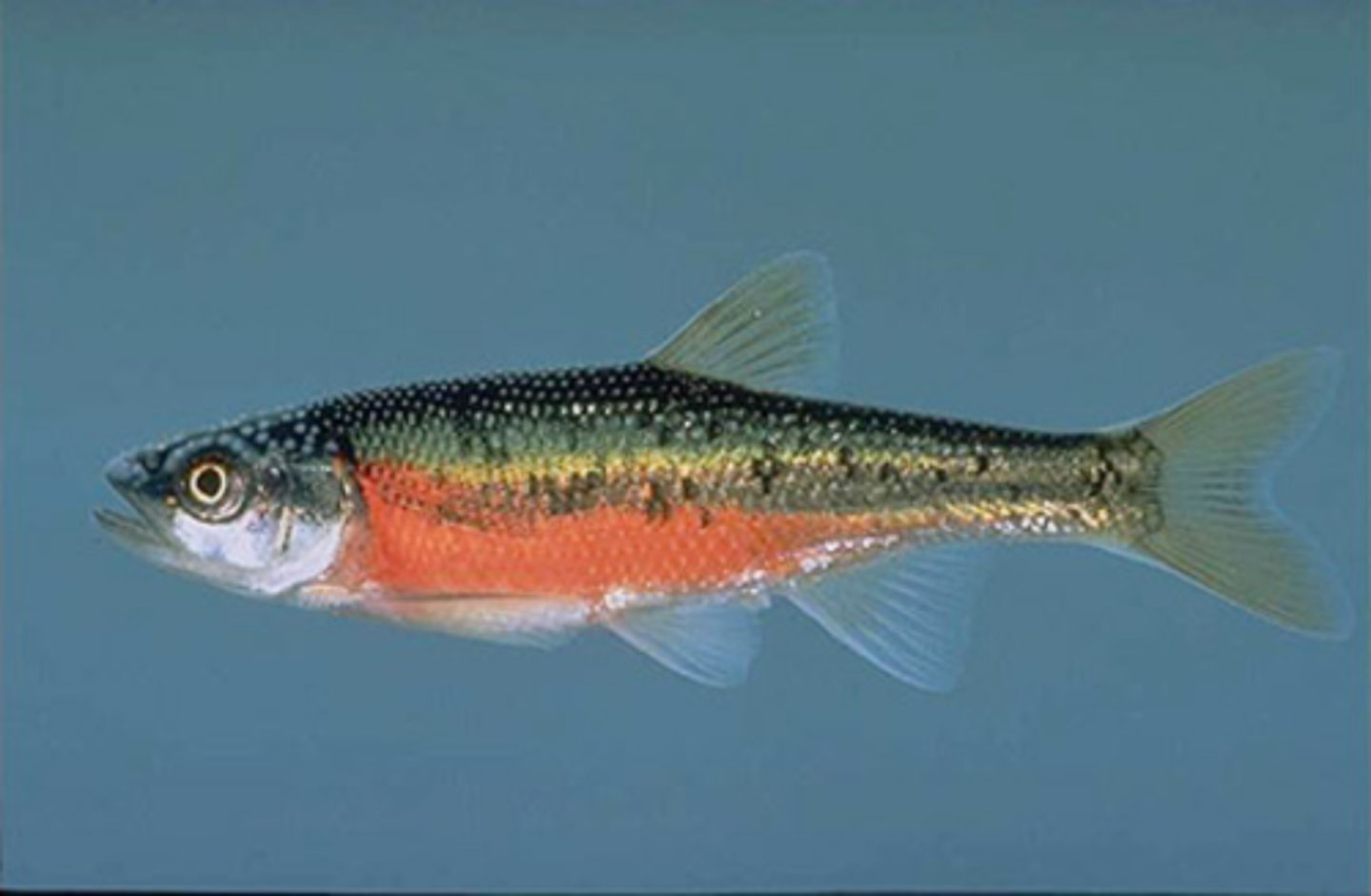
Satinfin Shiner features
- color uniform silver
- posterior end of scales darker
- diamond shaped scales
- breeding in summer
- streams to rivers
- slower regions of water
Satinfin Shiner
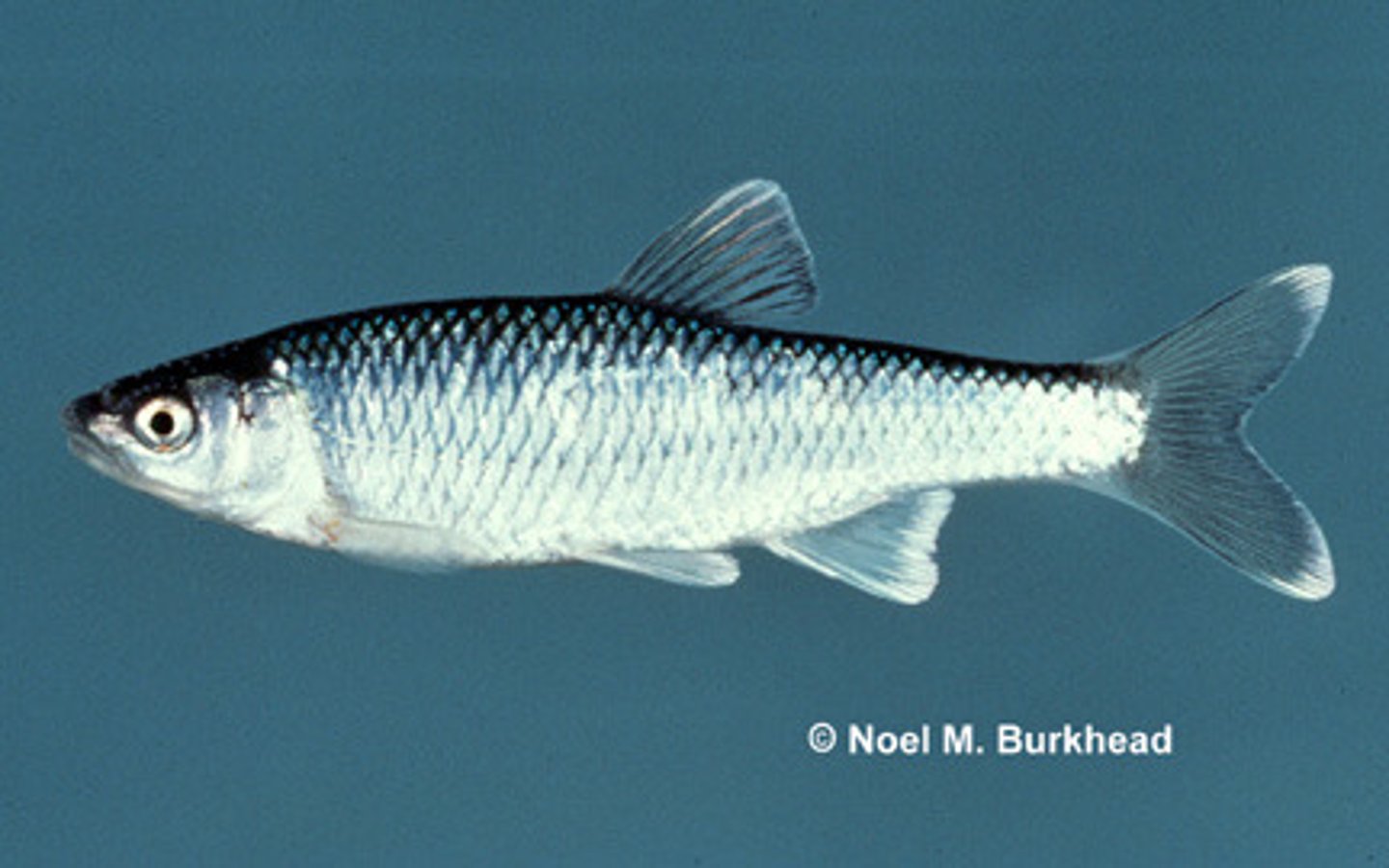
Common Carp features
- throughout VA, invasive
- 2 pairs of barbels
- high-back
- large adults
- very long dorsal fin
- scales darker at anterior ends (front darker than back)
- omnivorous
- slow streams and rivers with soft bottom
Common Carp
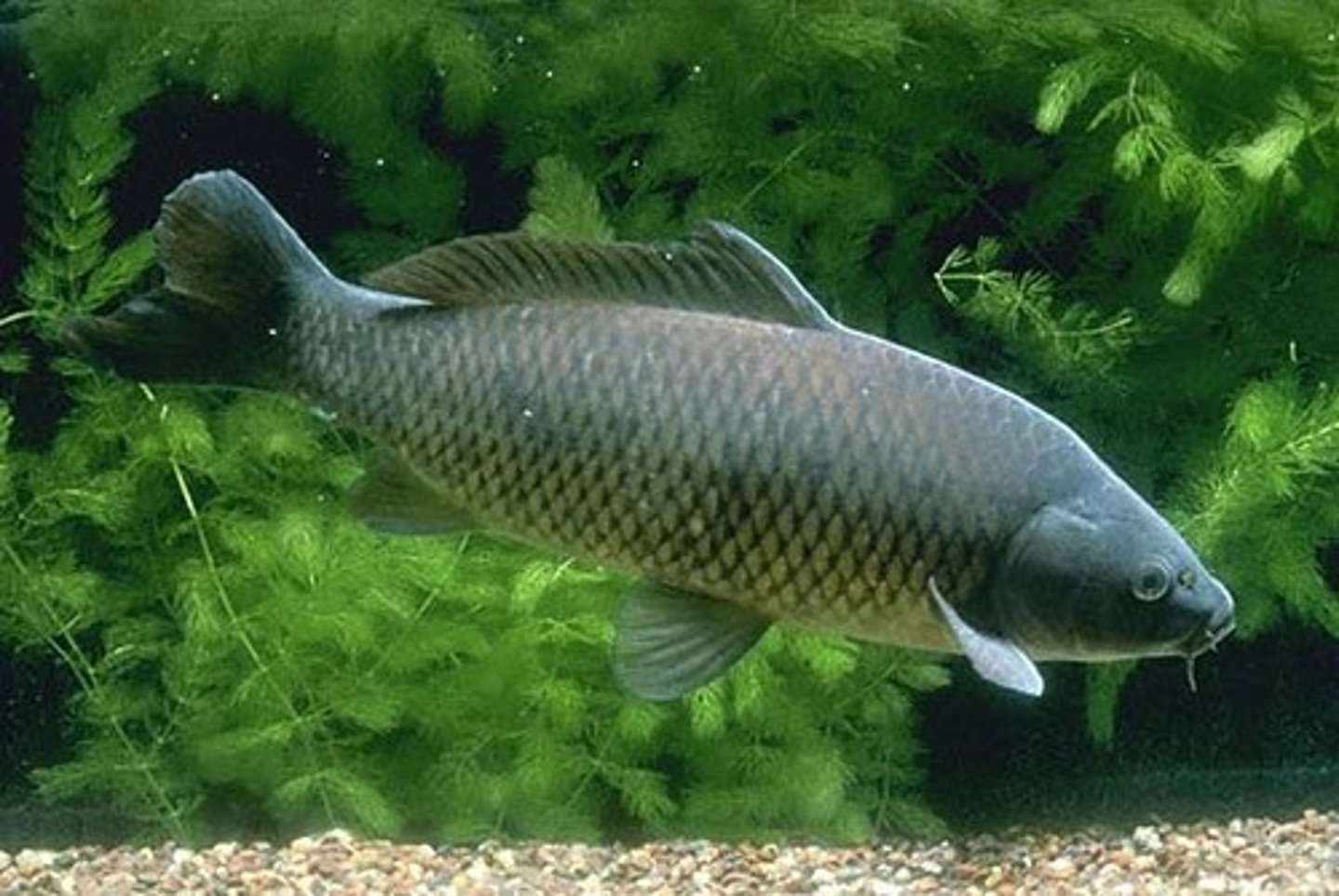
Cutlips Minnow features
- upper jaw is hood-like
- lower lip appears 3-lobed
- males construct mound-shaped nests
May to June
- Gravel and rocky streams of moderate to larger size
Cutlips Minnow
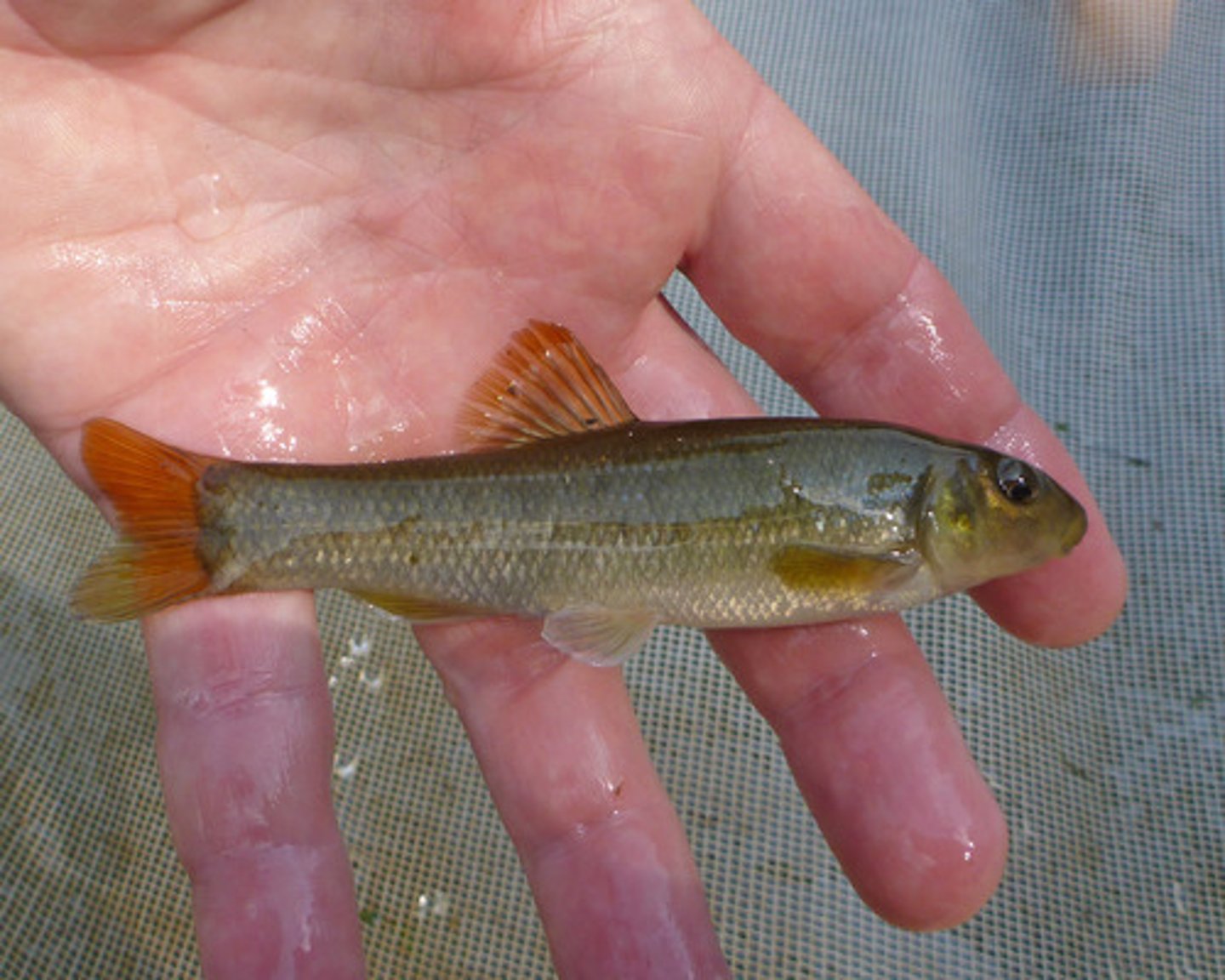
Fish fins
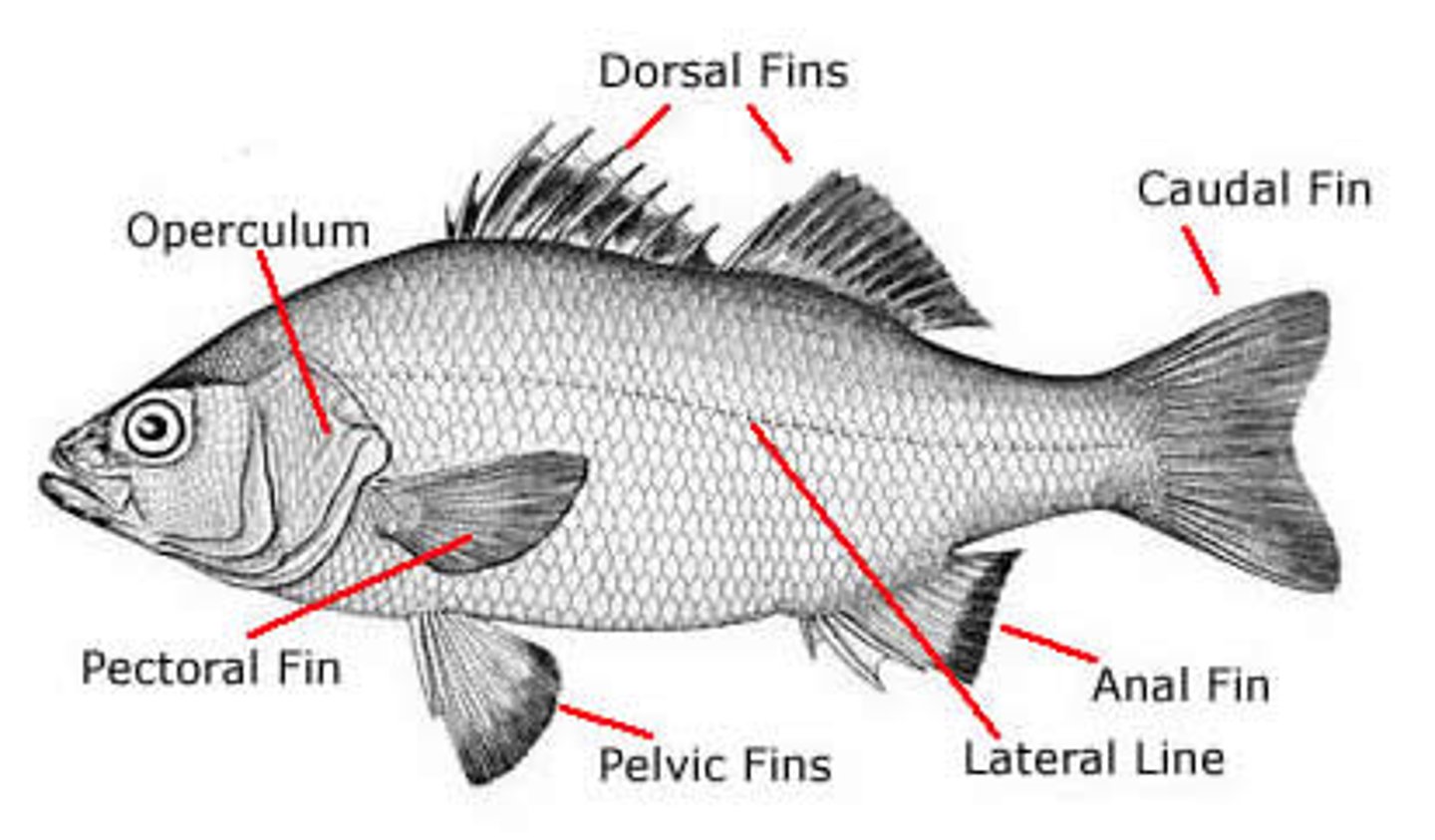
Crescent Shiner features
- crescent-shaped dark marks on side
- circumpeduncle scales usually 14
- common in creeks, streams, small rivers
- prefer pools but found in runs and riffles
Crescent Shiner
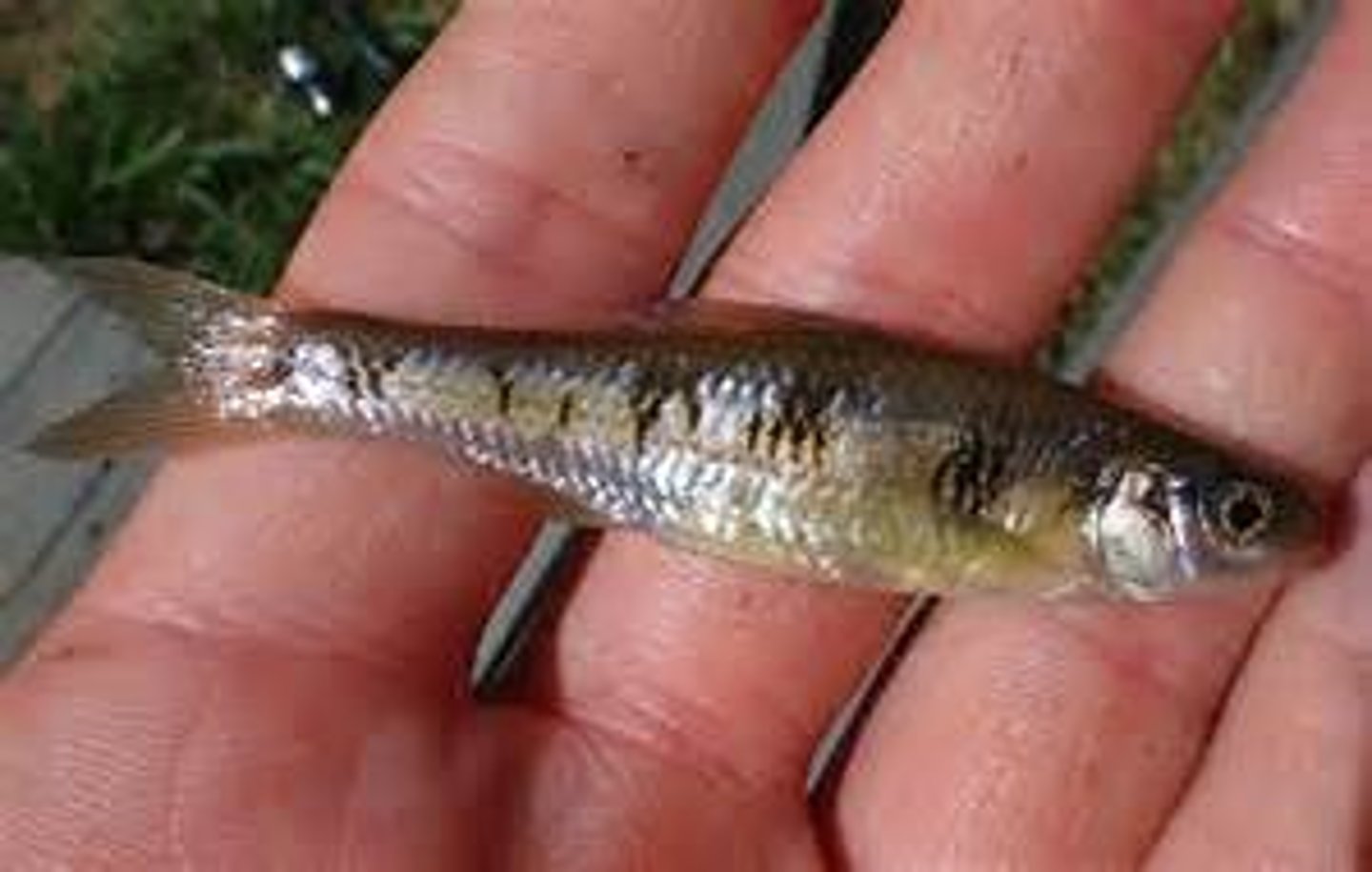
Common Shiner features
- circumpeduncle scales 15-16
- clear creeks, streams, rivers of moderate gradient
- prefer pools
- common in James River drainage
Common Shiner
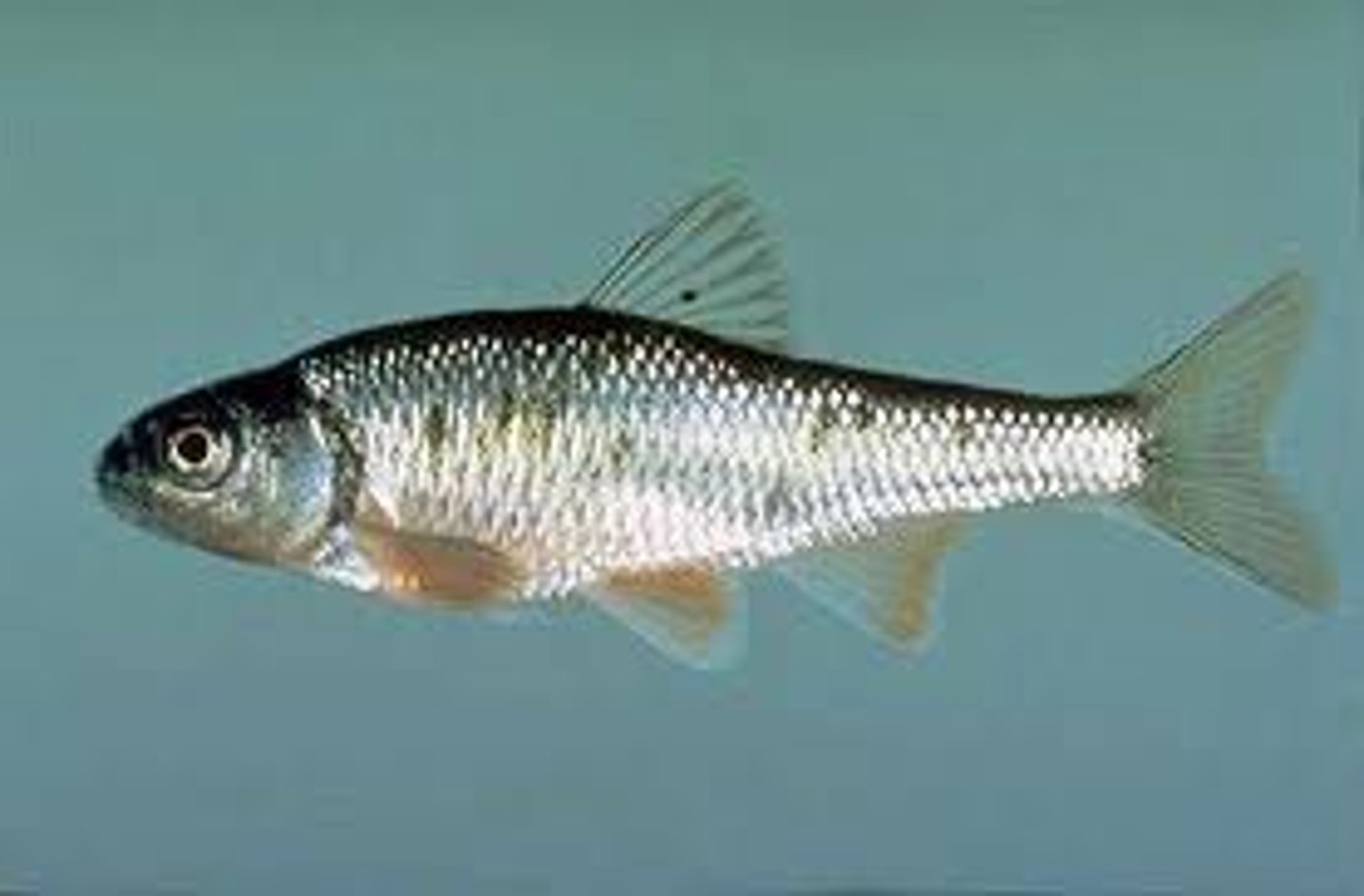
Rosefin Shiner features
- montane and piedmont
- slender
- dark pigment at anterior base of dorsal fin
- unpaired fins have reddish color in breeding males
- warm large creeks to rivers moderate gradient
Rosefin Shiner
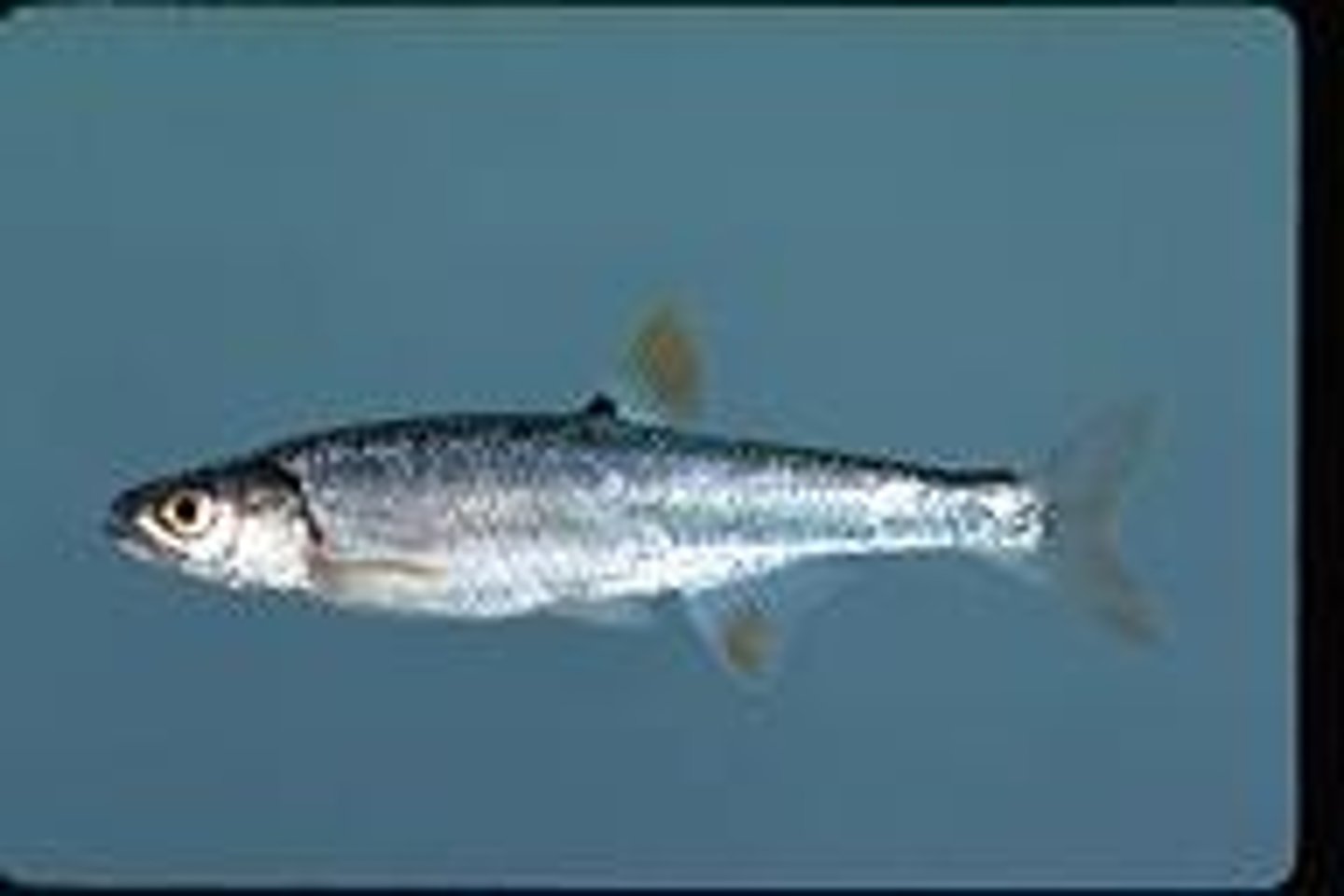
Bluehead Chub features
- no tubercles on snout, only b/t eyes and on forehead
- head bluish in breeding males
- smaller headwaters and streams
- breeds May + early June
Bluehead Chub
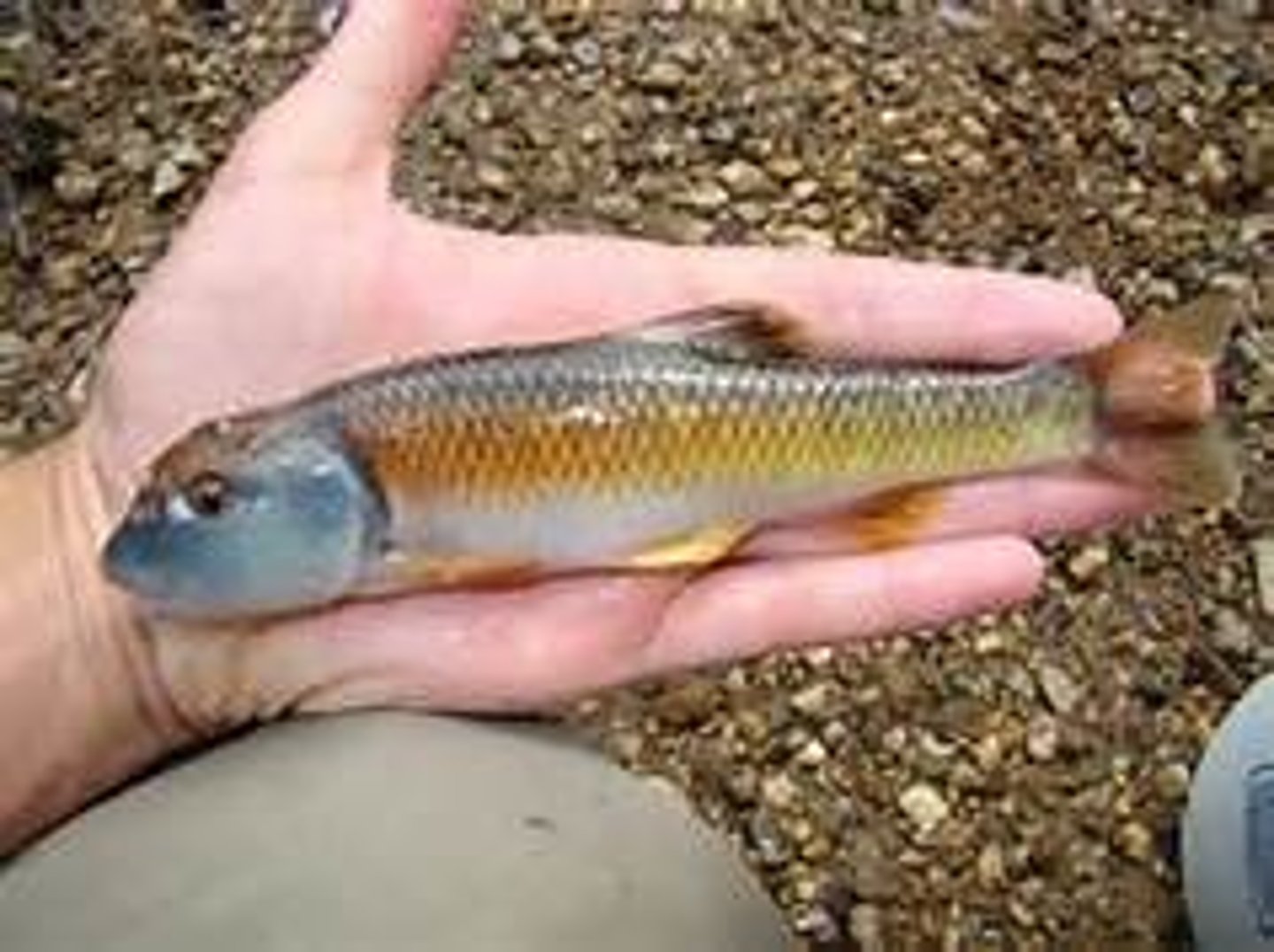
River Chub features
- mouth is subterminal
- head reddish in breeding males
- no tubercles on forehead
- nests are built
- medium to large streams and rivers
River Chub
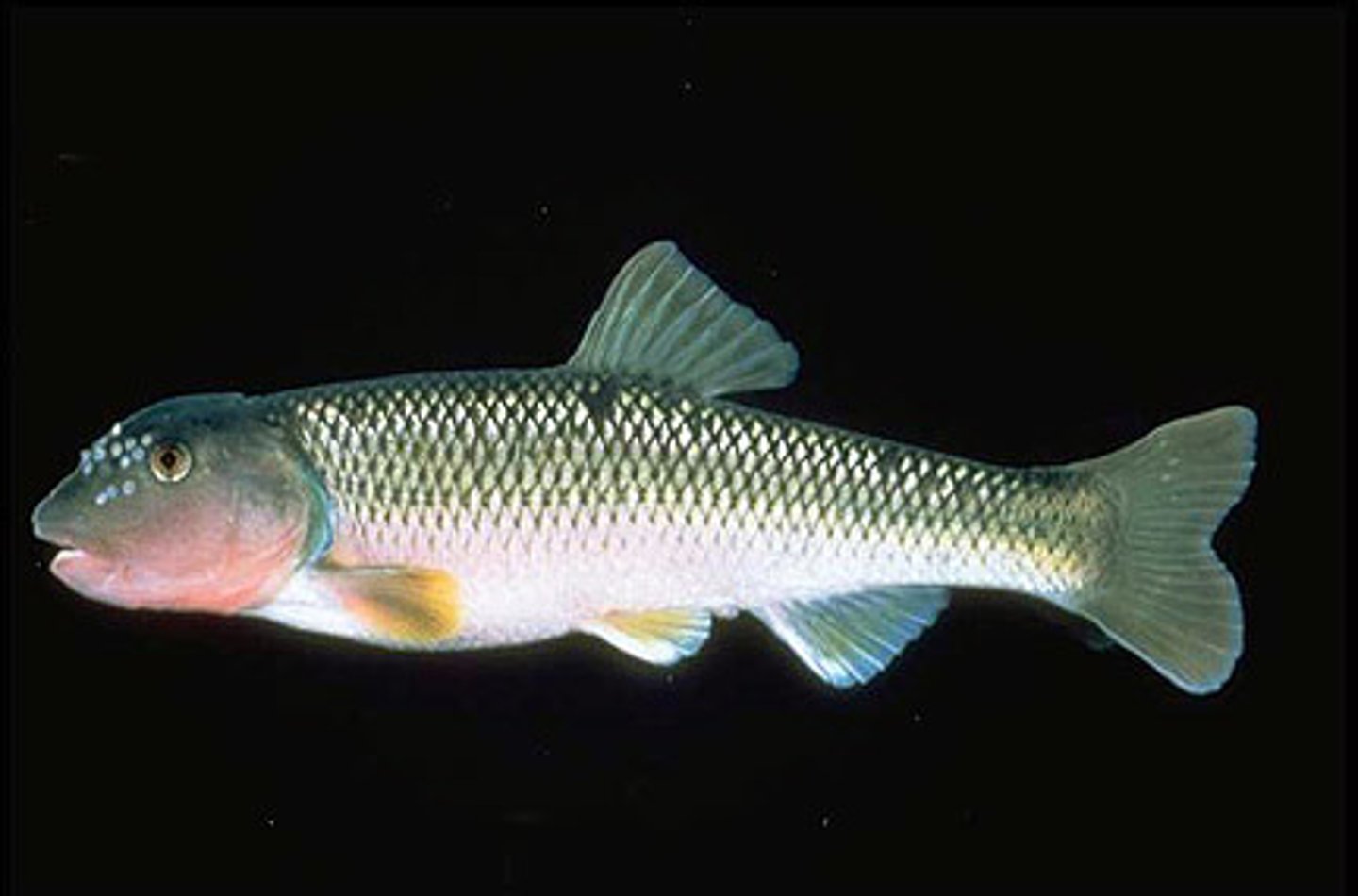
Bull Chub features
- breast in usually naked (less than 30% scaled)
- tubercles all over head
- breed in nests in May
- rocky bottoms of major rivers and tributaries
Bull Chub
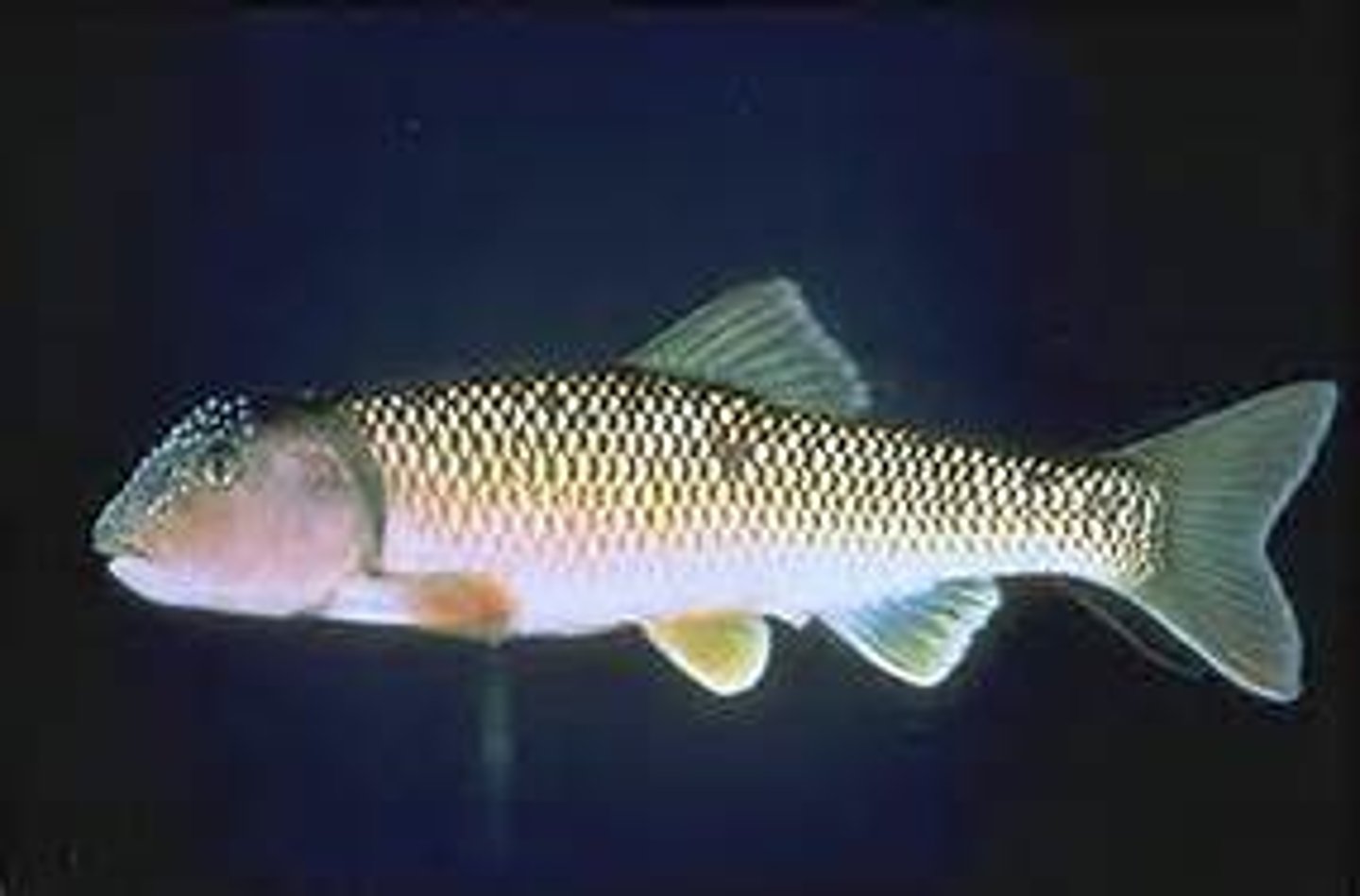
Spottail Shiner features
- large eyes
- spot at base of caudal fin
- usually dark midlateral line
- breeding in April and May
Spottail Shiner
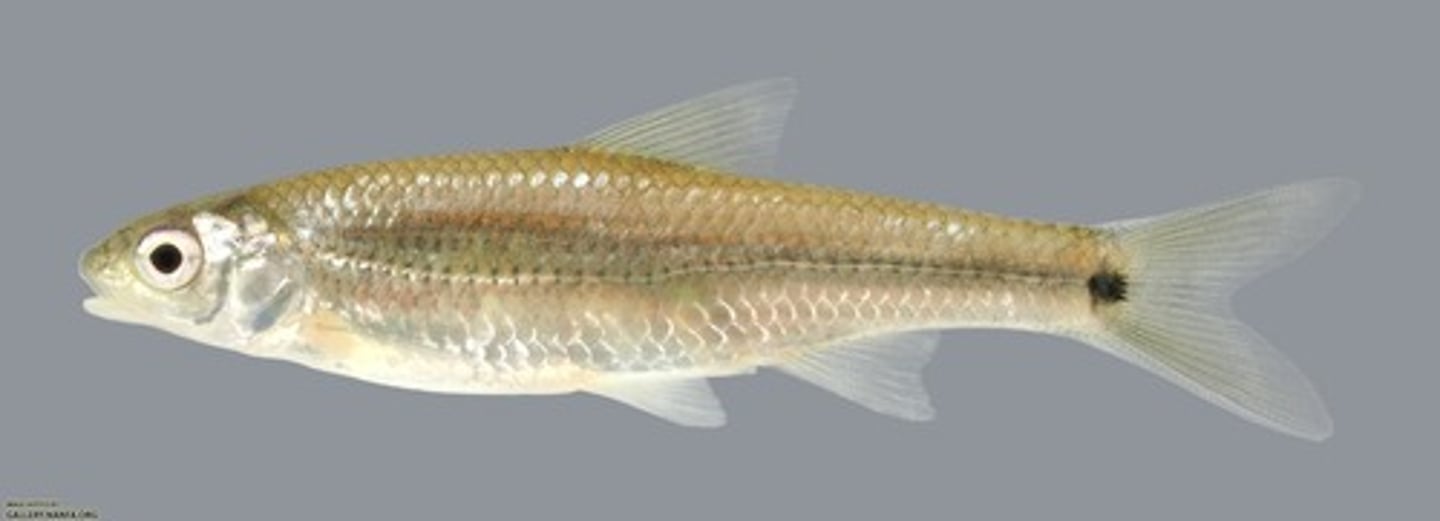
Swallowtail Shiner features
- well developed narrow midlateral stripe
- dorsal scales darkly outlined
- warm large creeks to rivers moderate to low gradient
- prefer head or tail of pools
Swallowtail Shiner
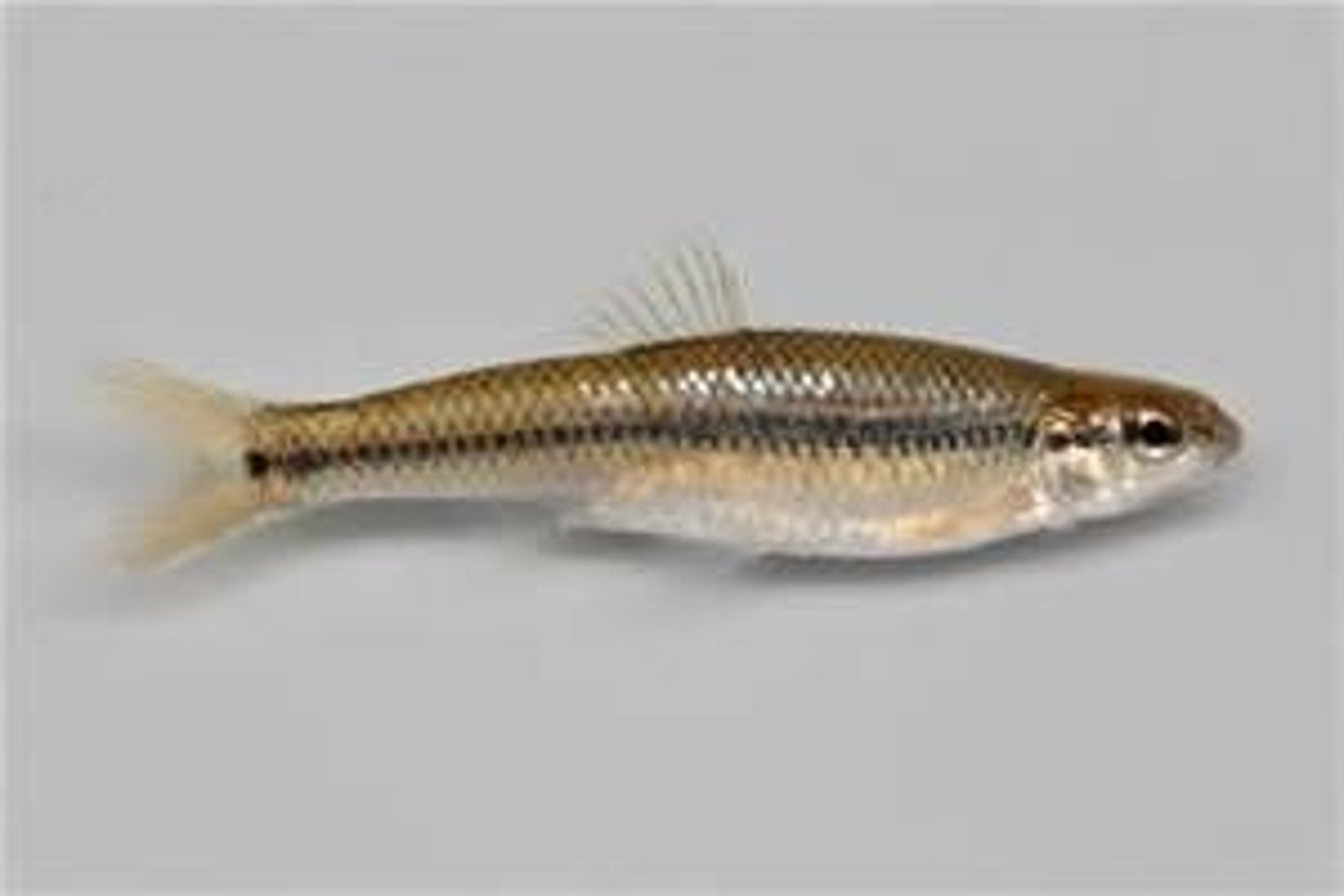
Rosyface Shiner features
- red on head and sides of body, strongest behind operculum
- slender
- warm medium streams to large rivers moderate to low gradient
Rosyface Shiner
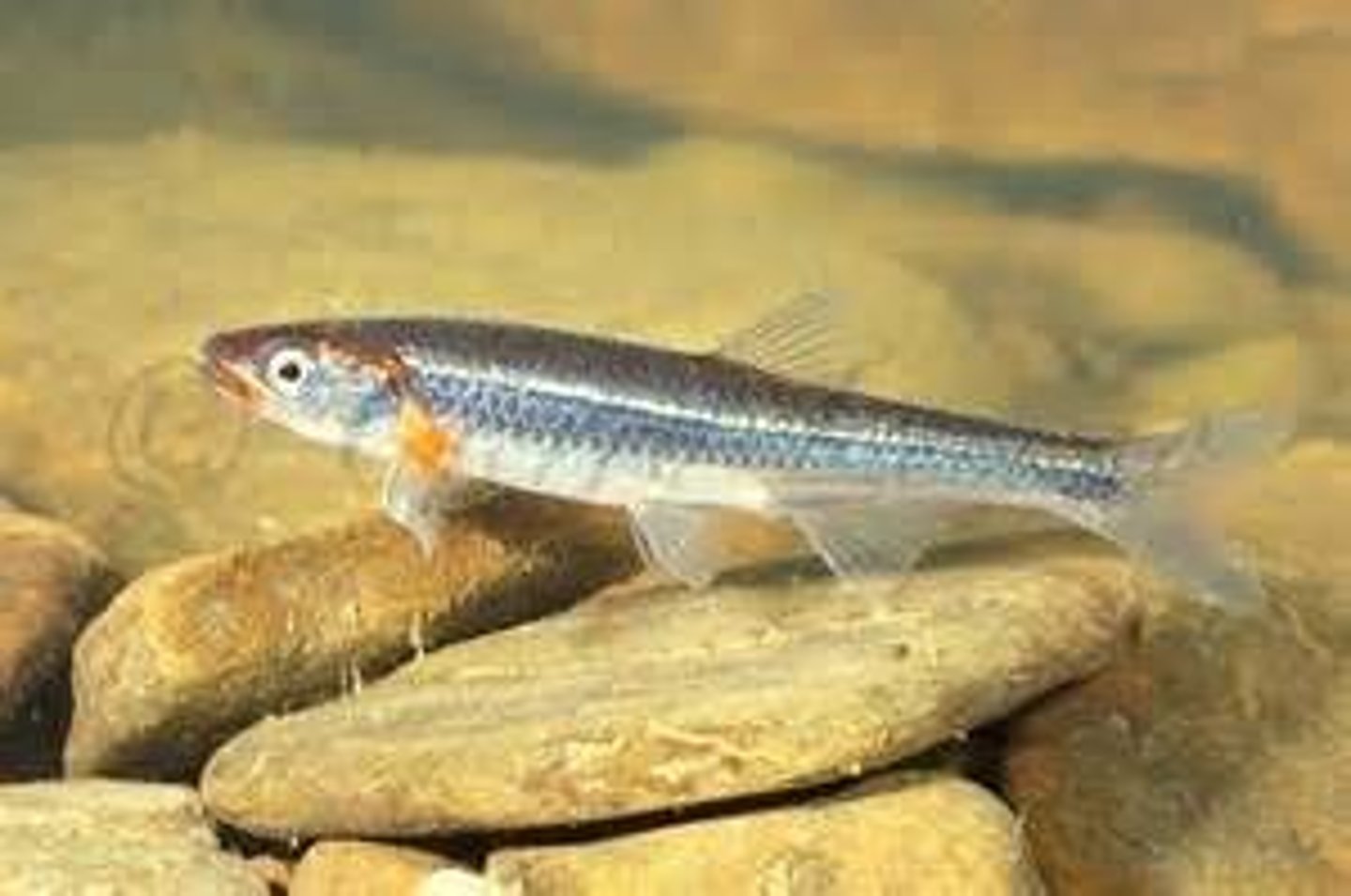
Telescope Shiner features
- very large eye
- middorsal stripe
- scale margins black
- clear, moderate to low gradient streams and some rivers
Telescope Shiner
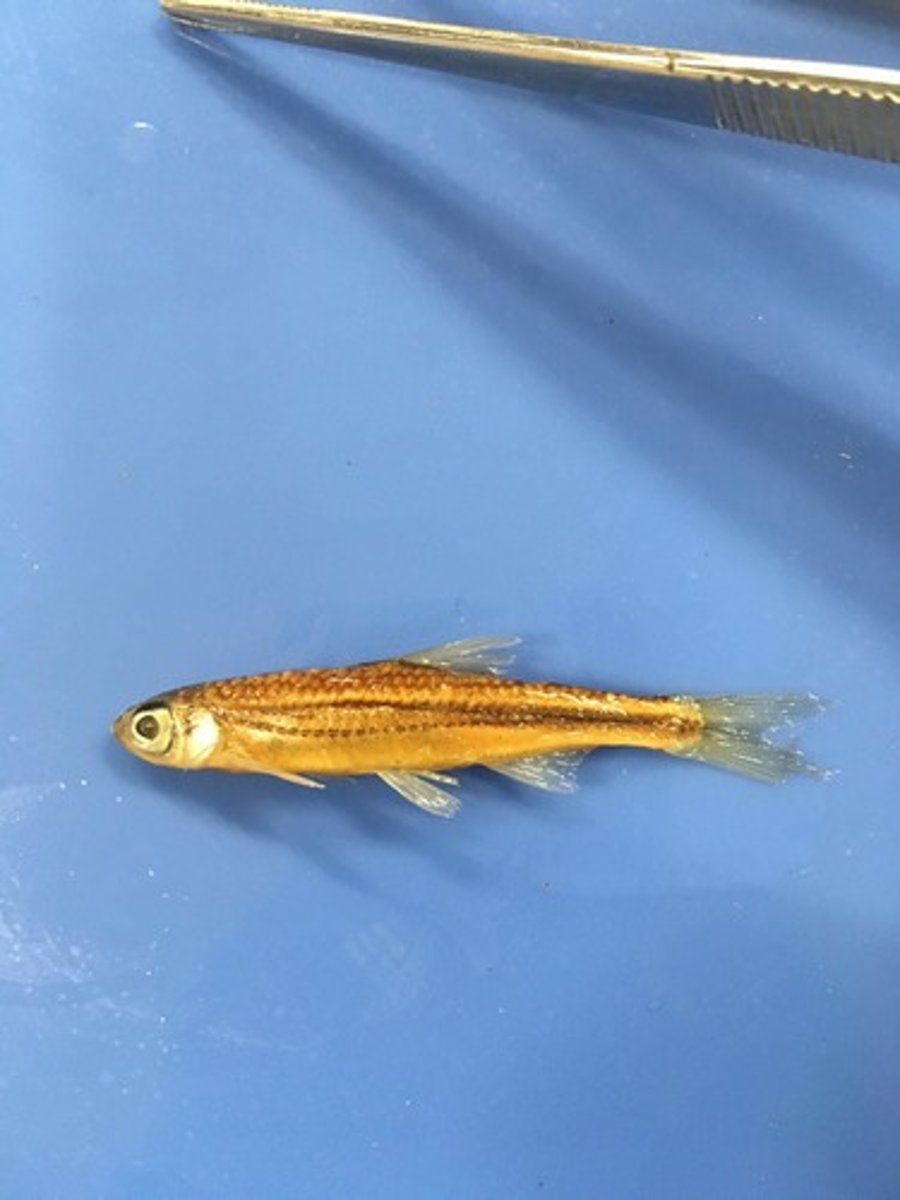
Mountain Redbelly Dace features
- fine-scaled
- dark blotches dorsally
- lower side and belly are red
- eggs laid in gravel nest of other minnows
- small streams, often in pools or slower waters
Mountain Redbelly Dace
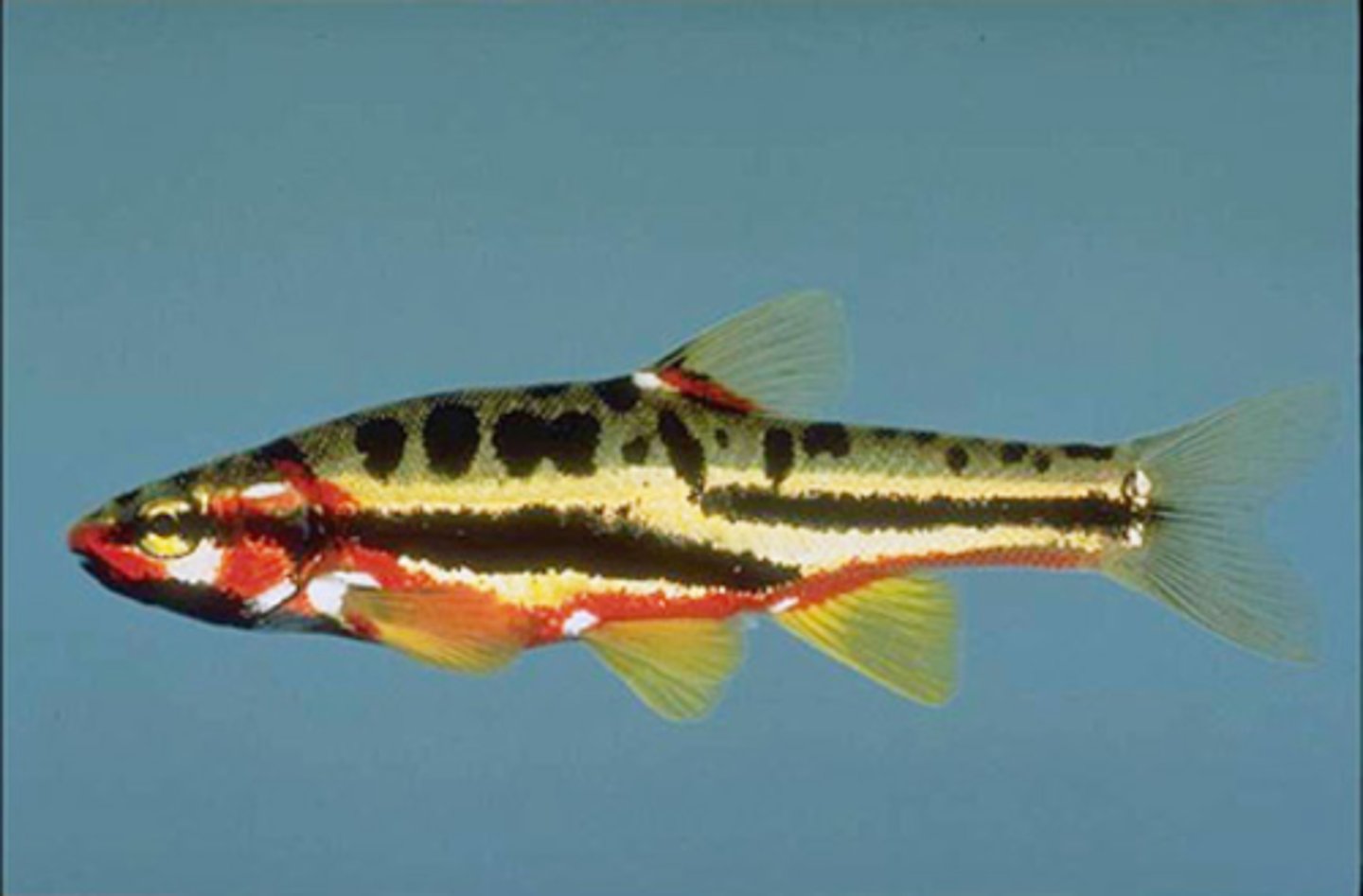
Bluntnose Minnow features
- blunt nose with stream-lined body
- intense caudal spot
- mouth subterminal
- scales start small and get larger towards tail
- build nest cavities under cover objects
- prefer pools/slower runs
Bluntnose Minnow
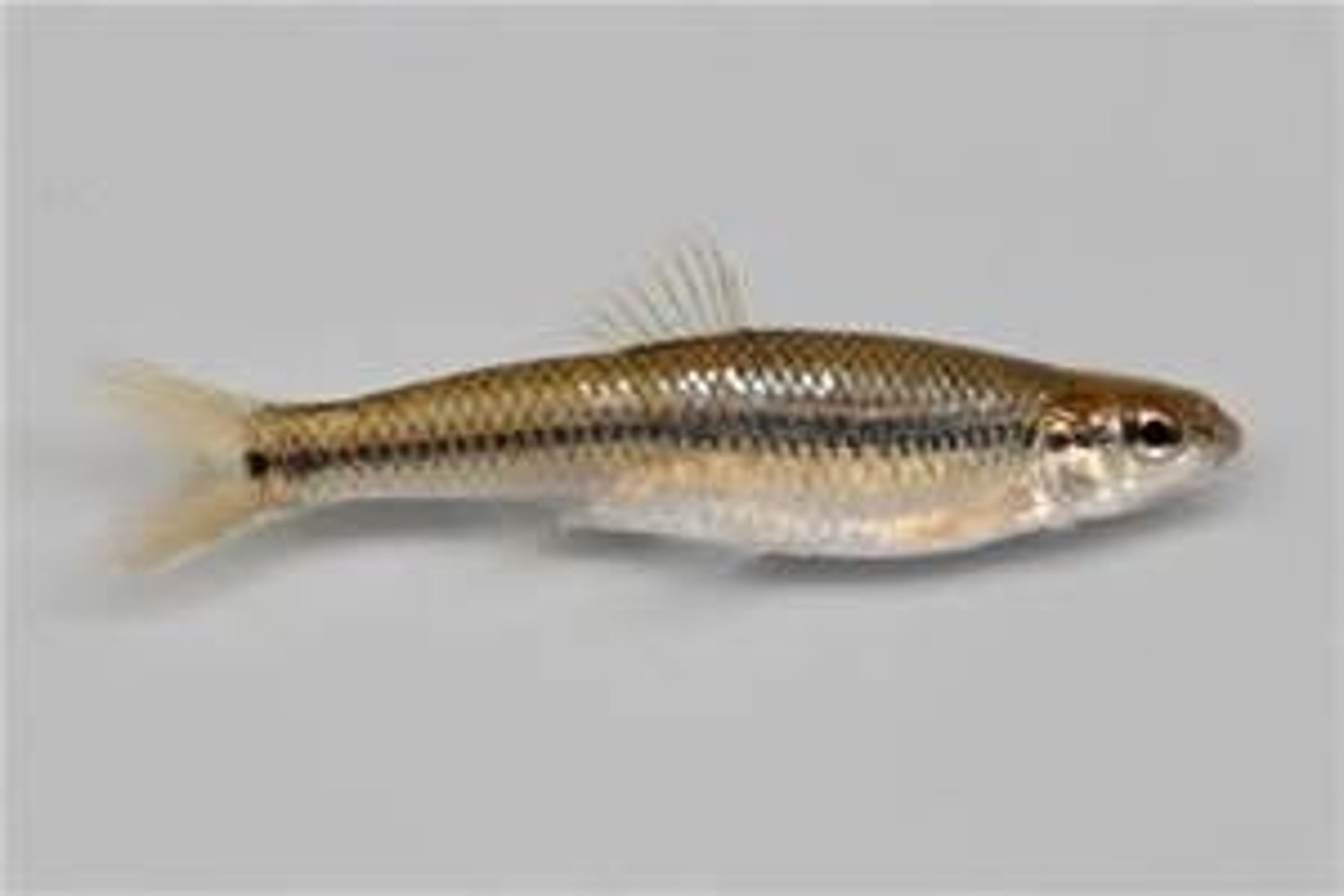
Blacknose Dace features
- downward turned head
- broad black midlateral stripe
- diet: aquatic insects
- small to medium streams, usually gentle riffles and runs
- breed April and May
Blacknose Dace
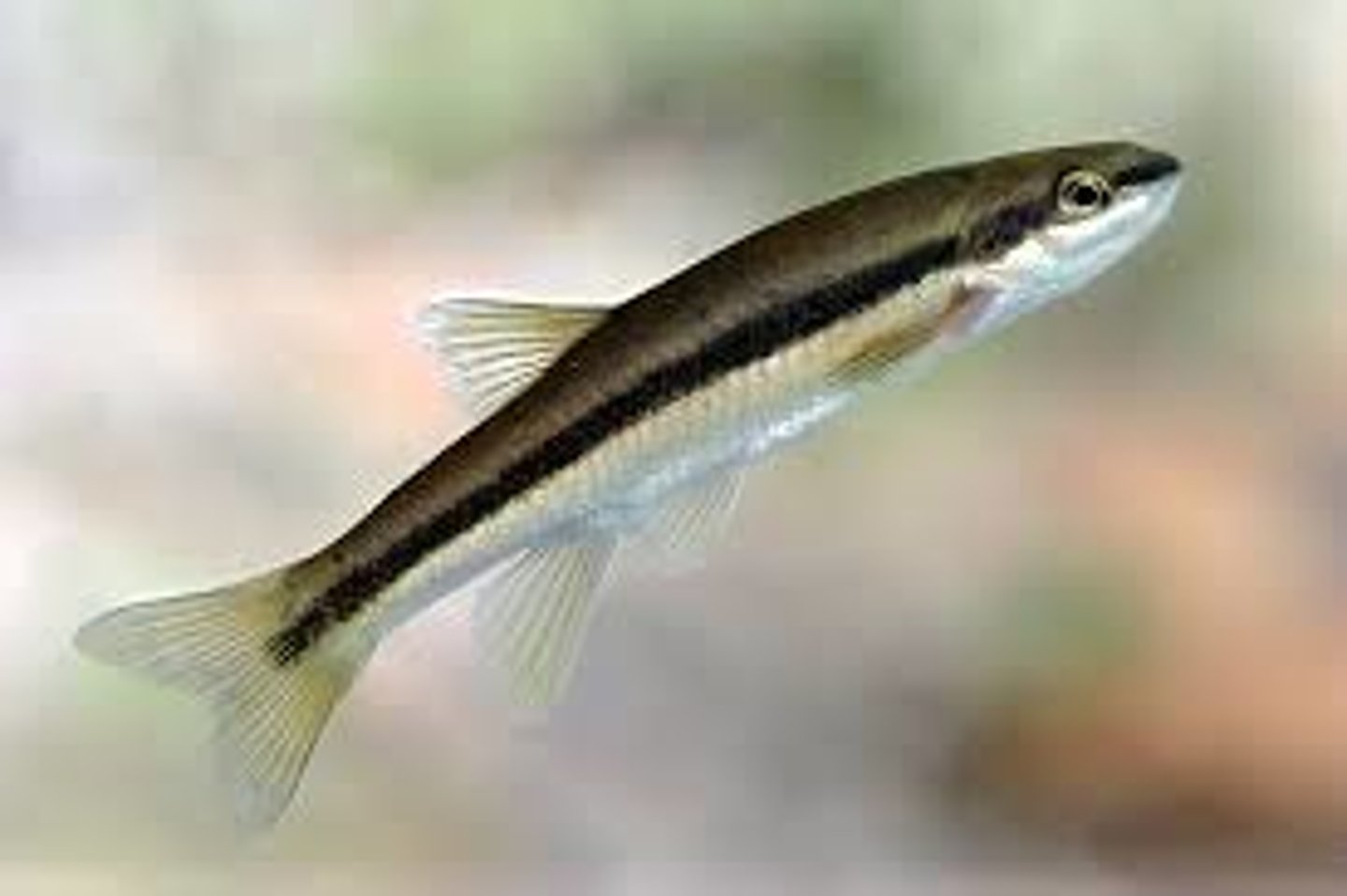
Longnose Dace features
- long snout, ventral mouth
- elongated body (kinda looks like shark)
- males are territorial
- moderate to high gradient streams
Longnose Dace
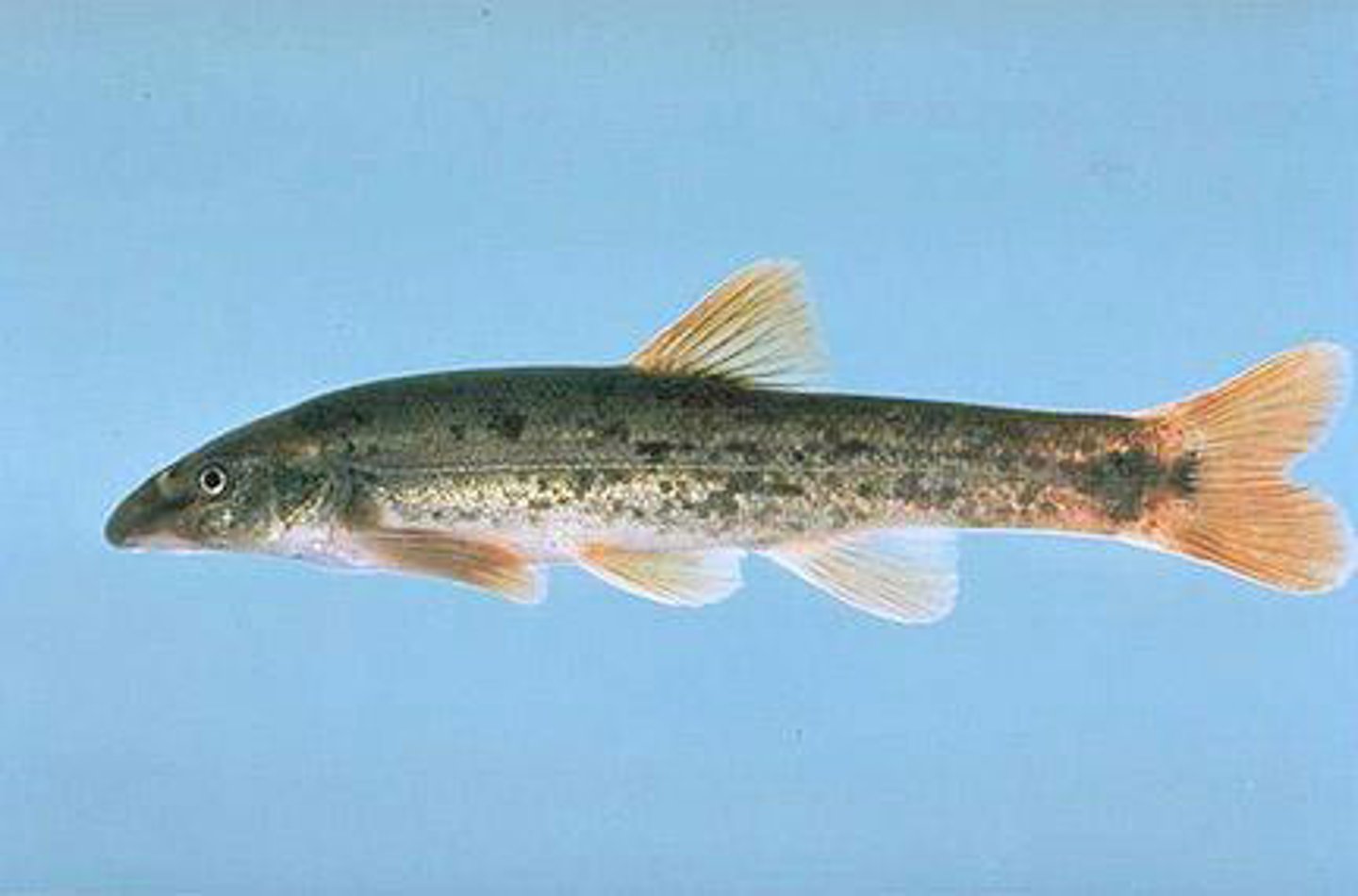
Creek Chub features
- throughout VA
- dark spot on anterior base of dorsal fin
- mouth terminal
- breeding on nests mid-March to mid-May
Creek Chub
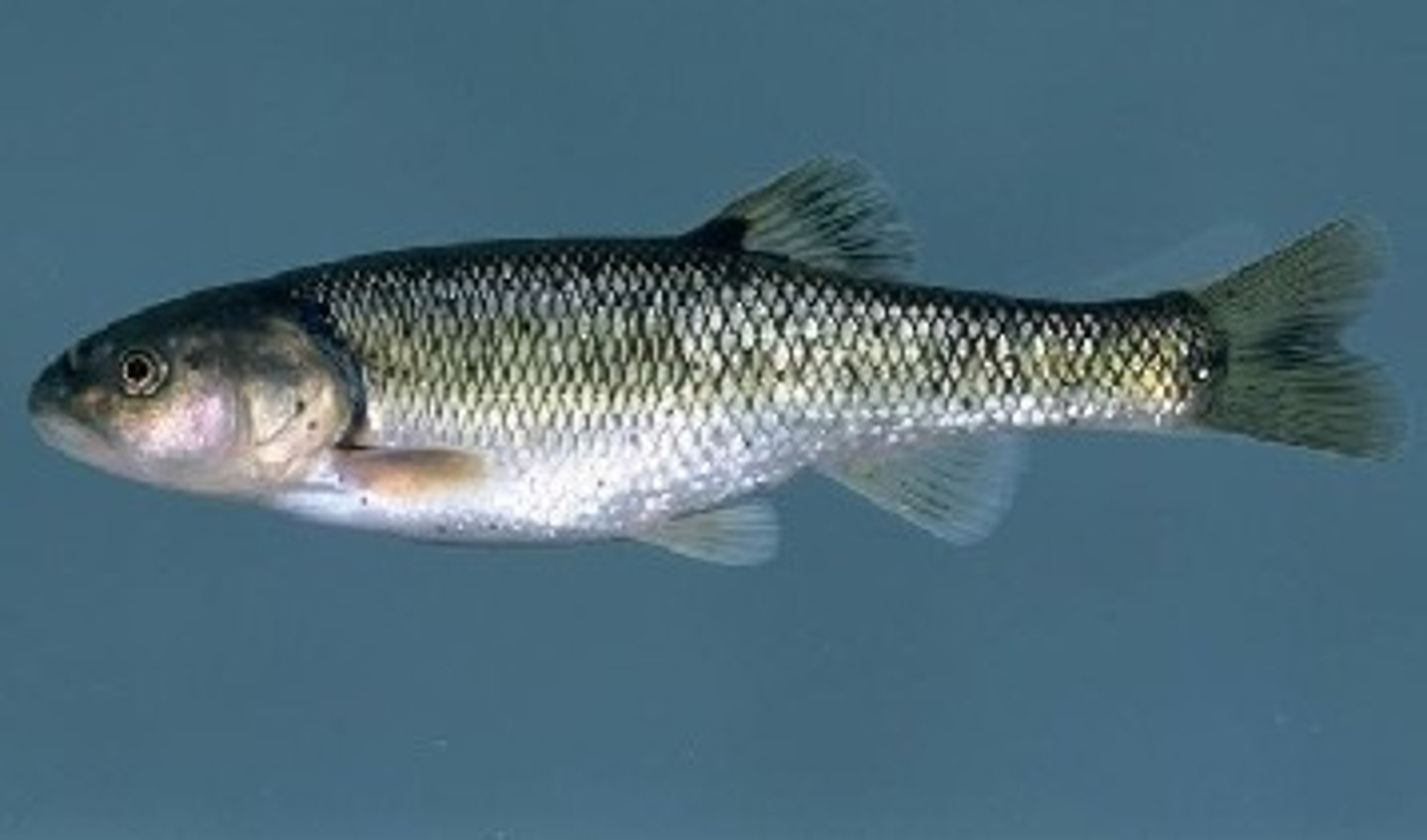
Fallfish features
- large silvery minnow
- pelvic fins rosy
- breeding late April and early May
- juveniles have dark, broad midlateral stripe
Fallfish (Semotilus corporalis)
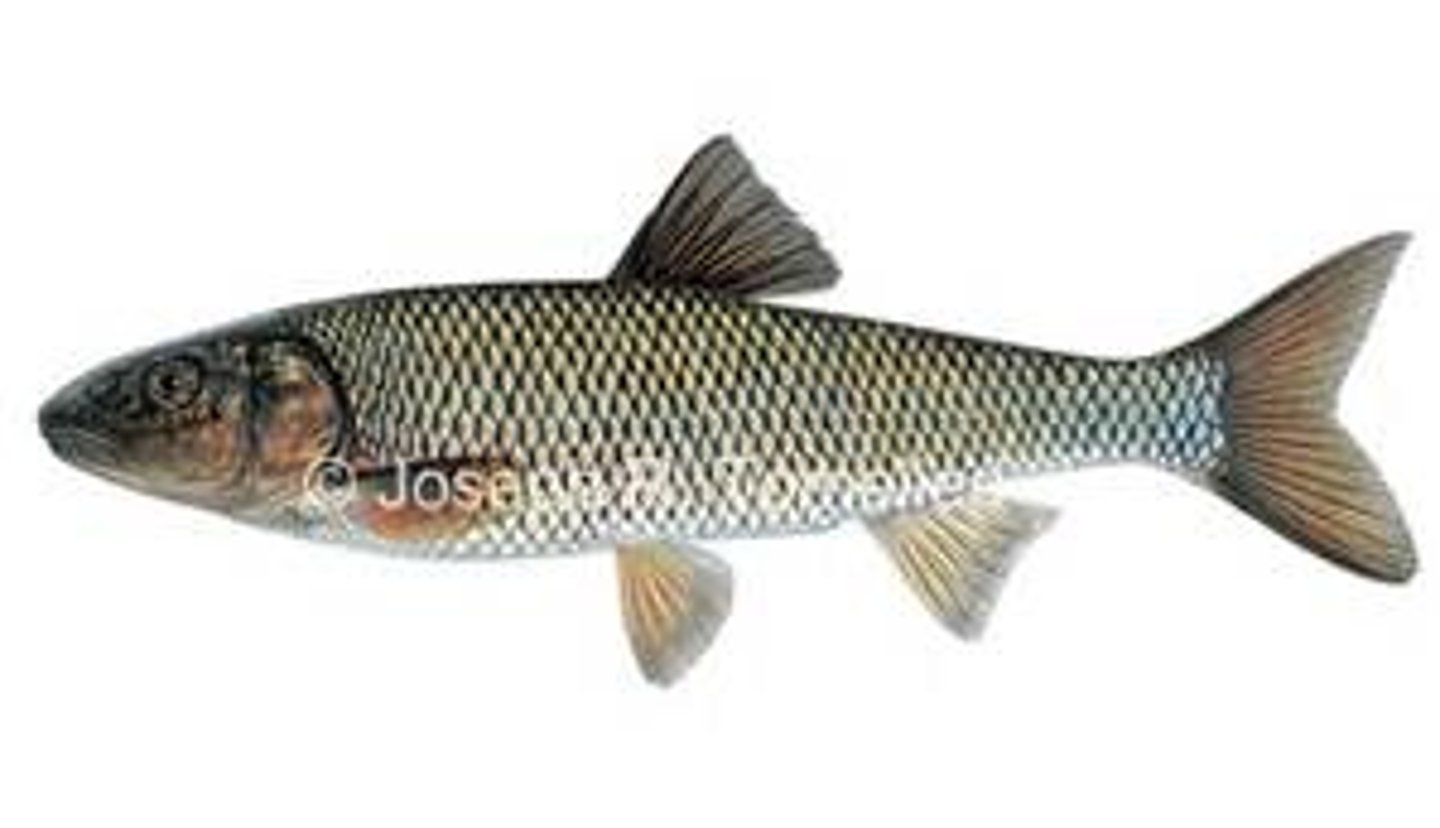
Sucker Family
Catostomidae
- toothless, sucker like mouth
- head is naked
- cycloid scales
- mostly omnivorous
- spawn in spring
- lay large numbers of eggs at random
Quillback features
- dorsal fin is sharply concave on the posterior margin with anterior tip much longer
- caudal fin well forked
- warm lakes, reservoirs, low-medium gradient rivers
Quillback
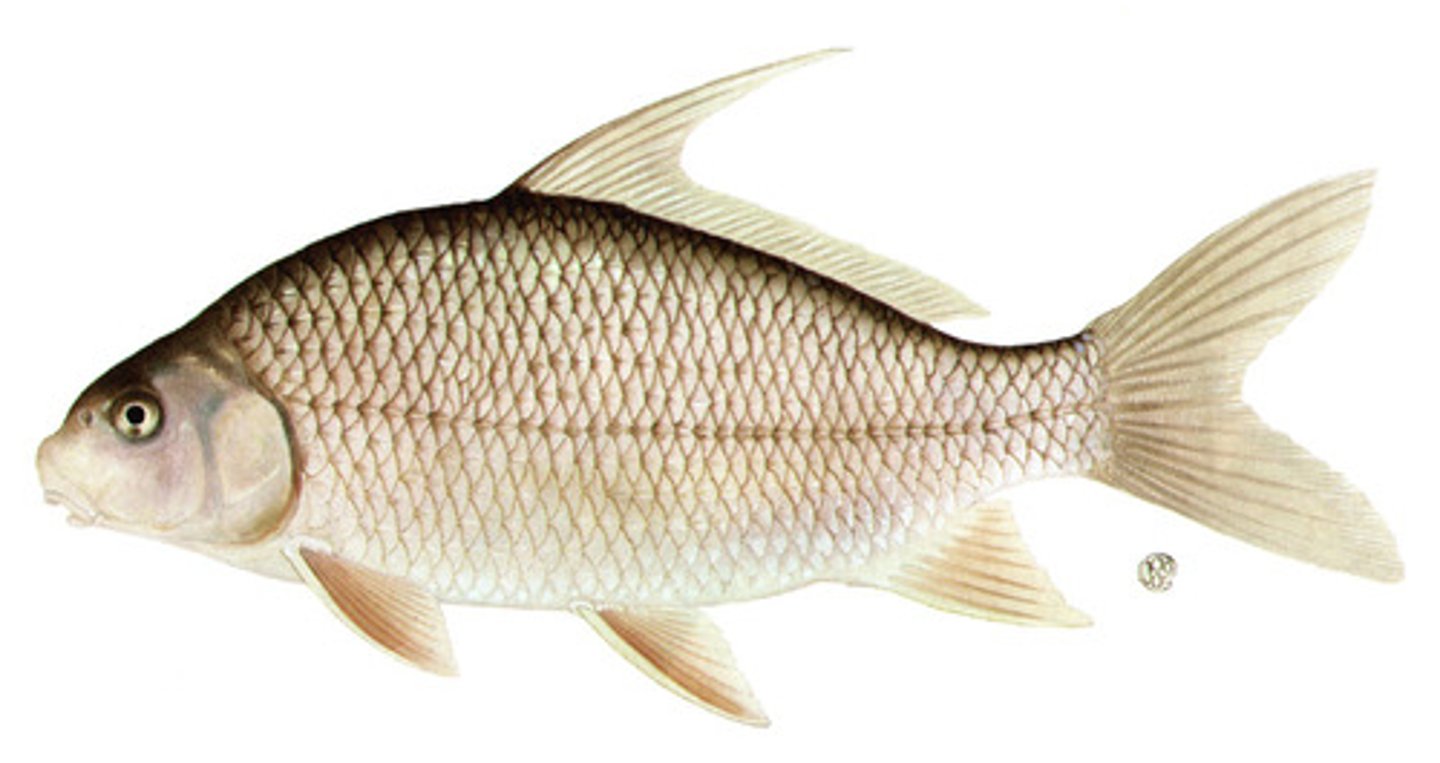
White Sucker features
- mouth is ventral
- largest of the suckers
- wide variety of aquatic habitats
- breeding late march to june
White Sucker
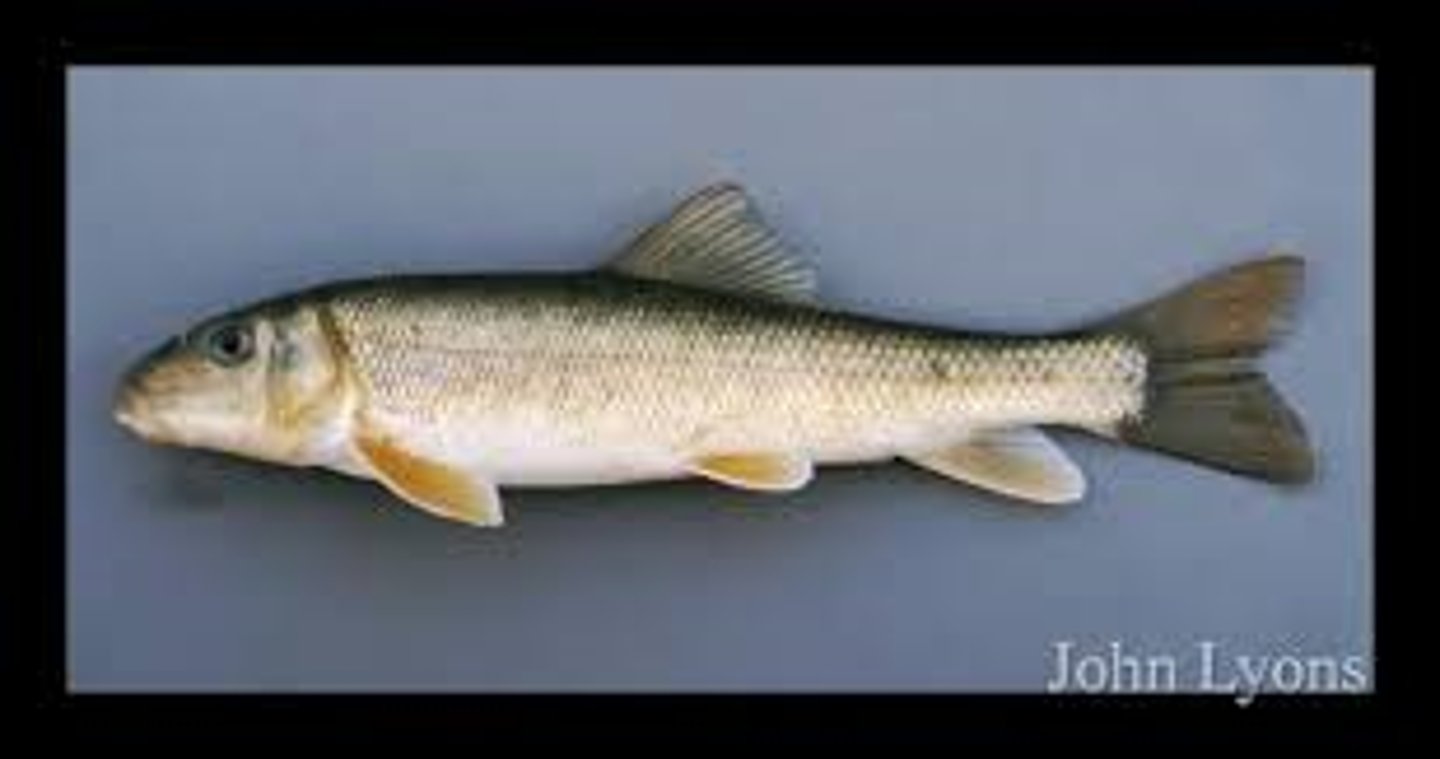
Northern Hogsucker features
- concave head
- forward-protruding lips
- breeding occurs March to May
- wide variety of aquatic habitats
Northern Hogsucker
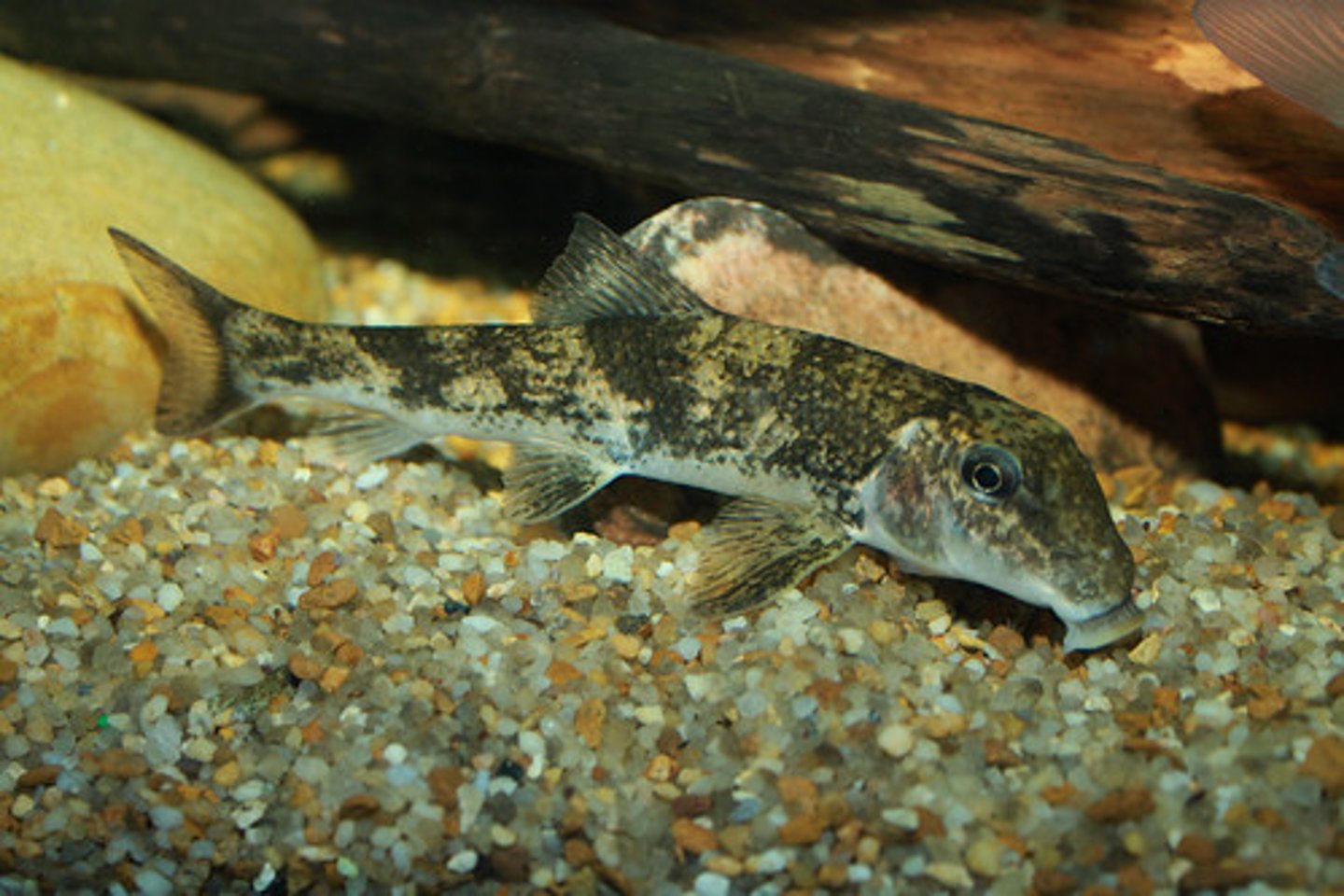
Roanoke Hogsucker features
- light horizontal lines on sides and back
- similar to Northern Hogsucker
- smaller
- Roanoke drainage
Roanoke Hogsucker
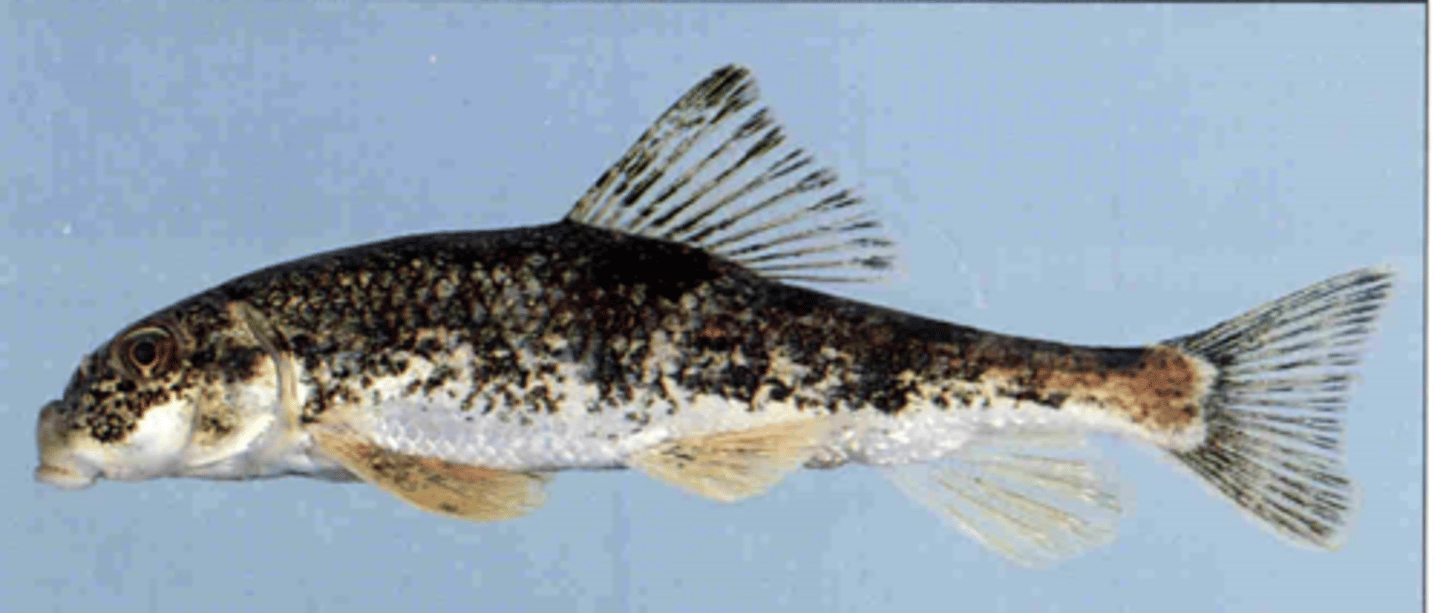
Blacktip Jumprock features
- tips of dorsal and caudal fins are black
- mouth is small
- large creeks to small rivers
- swift waters
Blacktip Jumprock
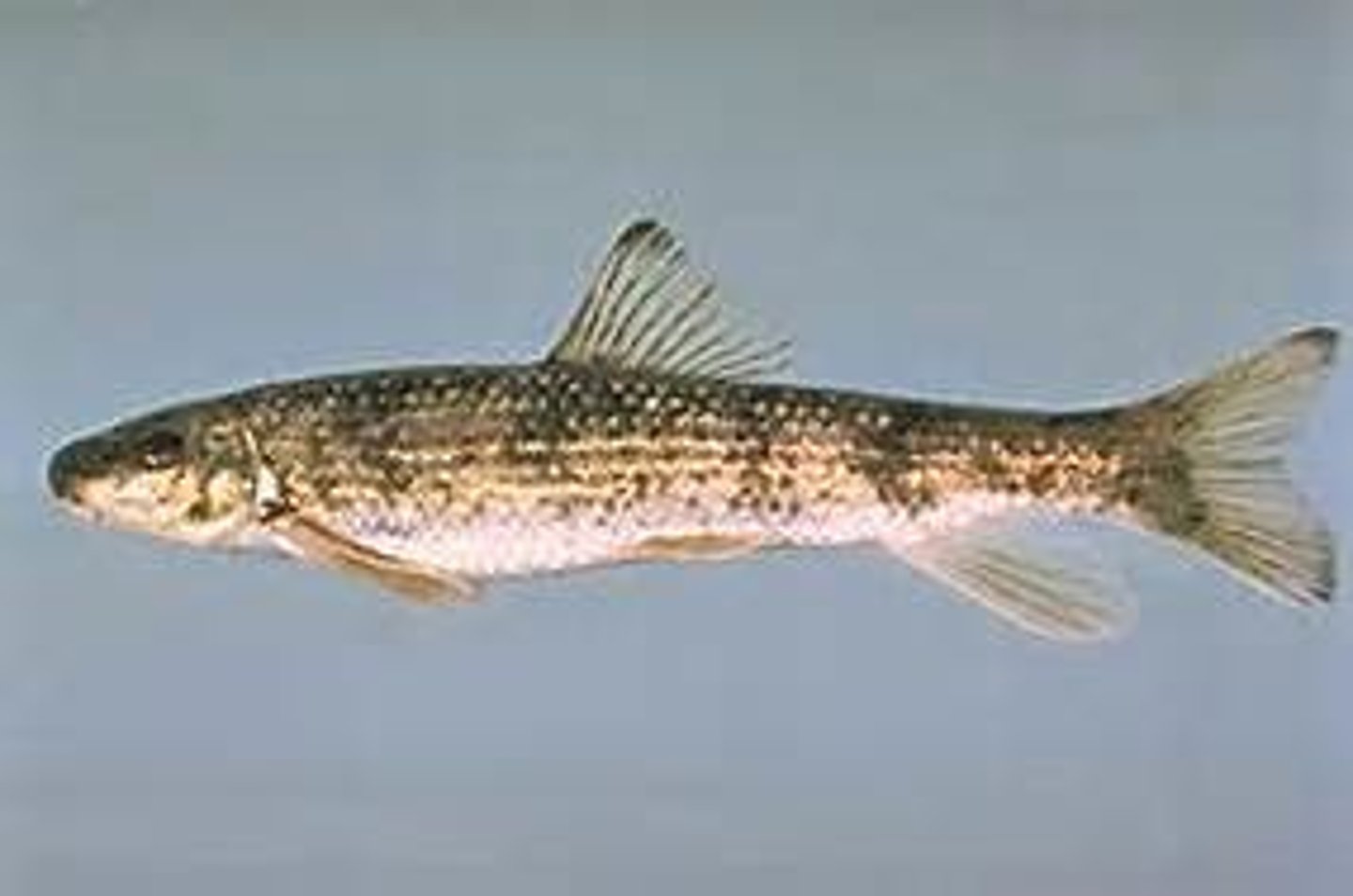
Golden Redhorse
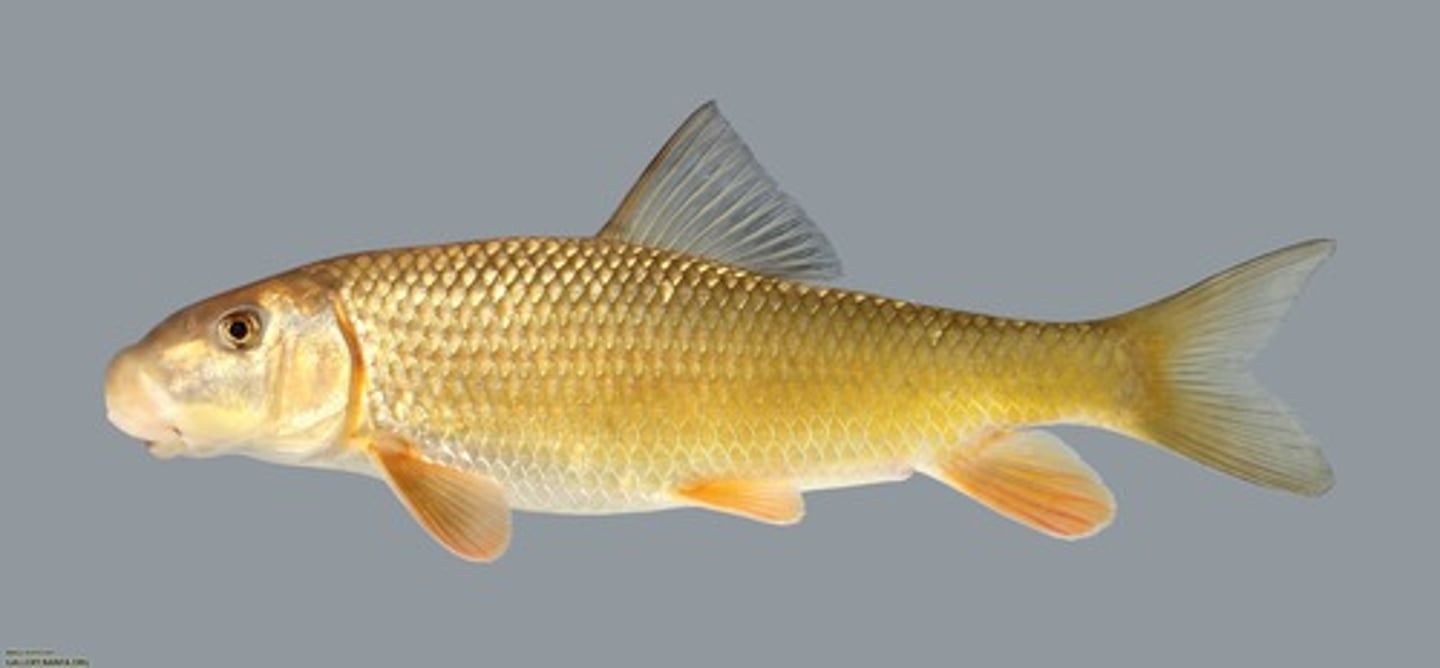
Golden Redhorse features
- sides yellowgold or brassy
- James and Roanoke rivers
- split bottom lip
- breeding April and May
Shorthead Redhorse features
- short-headed high-backed sucker
- scales have dark anterior base
- bottom lip not symmetrical
Shorthead Redhorse
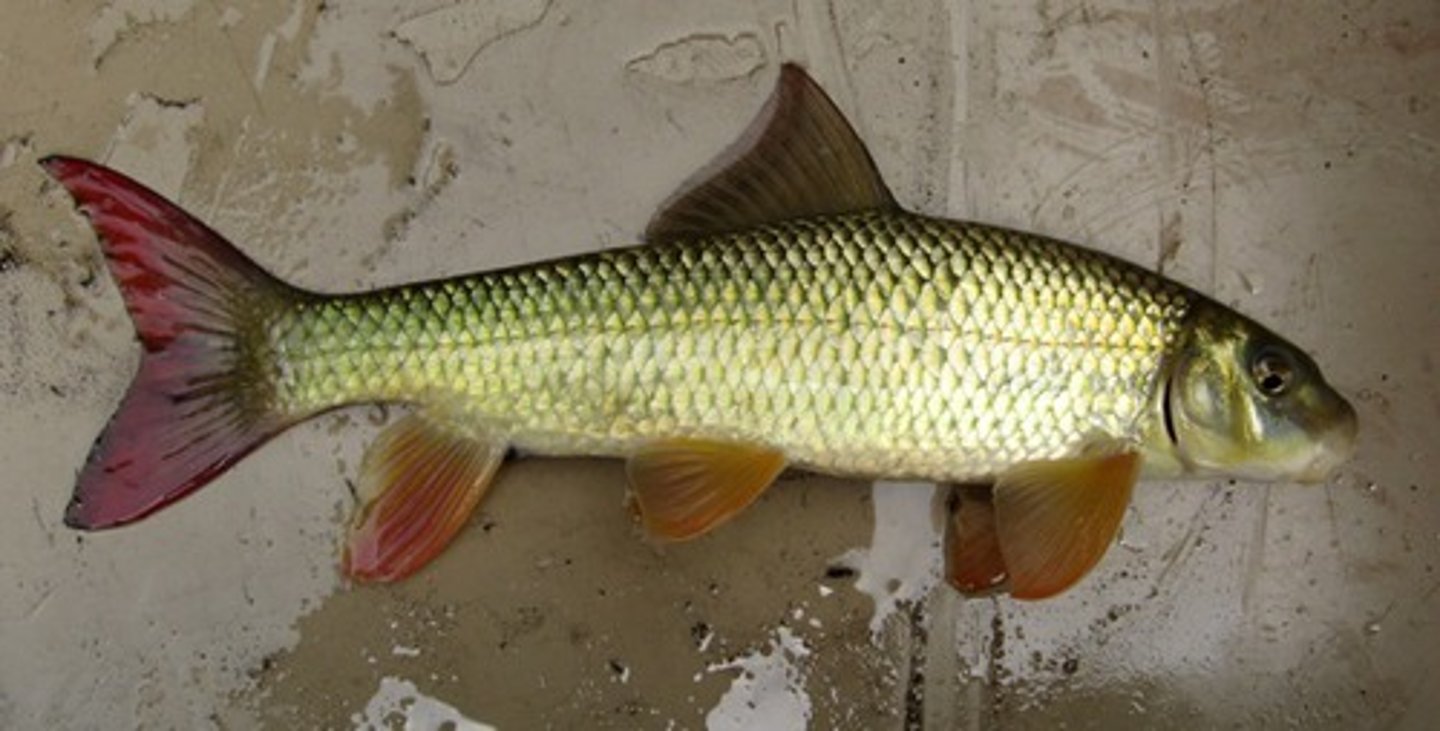
Torrent Sucker features
- two light spots on tail, one above the other
- elongated sucker
- swift water
- late March into April
Torrent Sucker
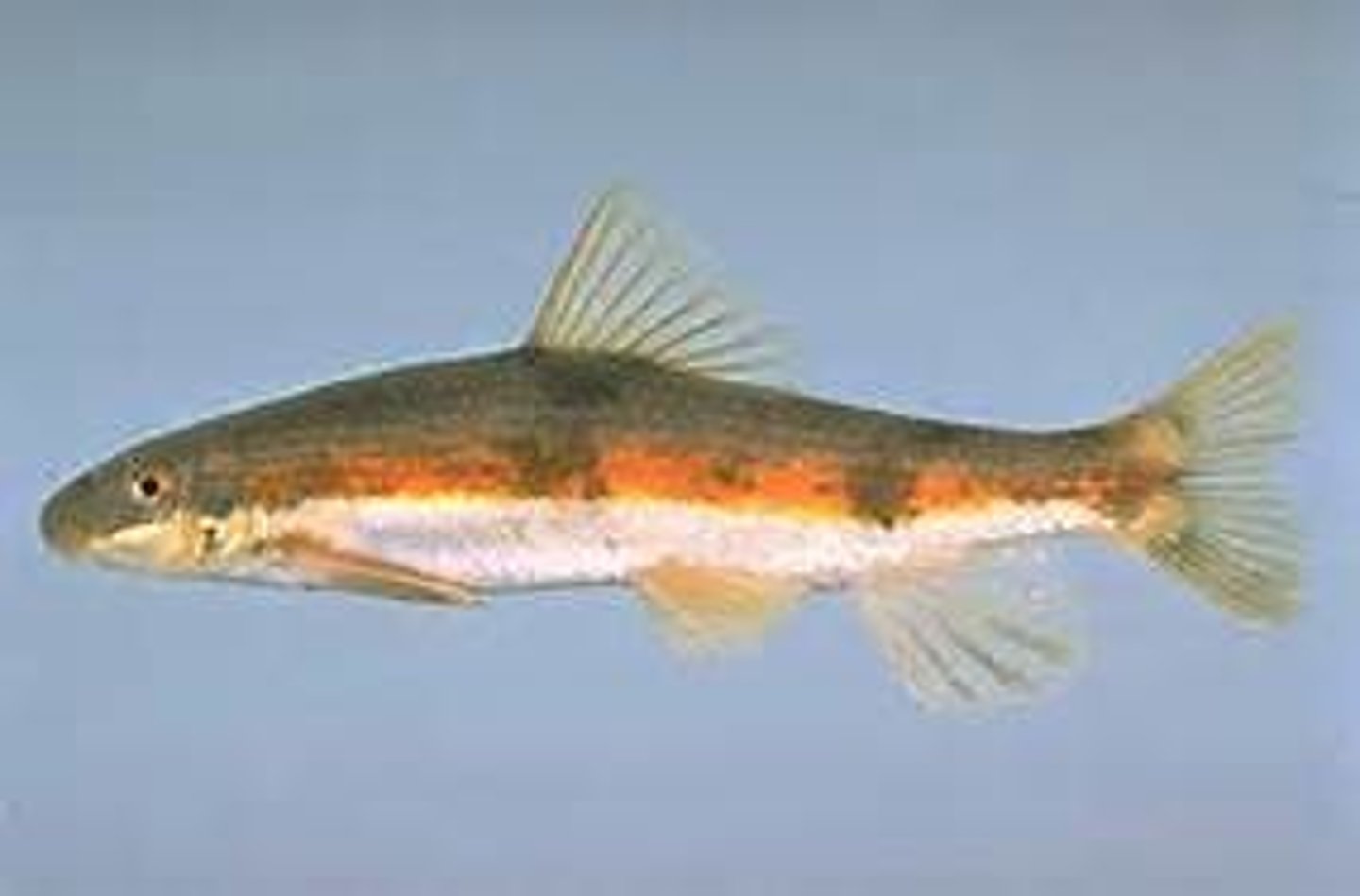
Catfish Family
Ictaluridae
- long barbels on mouth
- sharp pectoral and dorsal spines
- larger species are edible
- venomous glands in spines
- omnivorous
- most nocturnal
- spawn in Spring/early Summer using nests
- males guard nests and young
White Catfish features
- largest of bullheads
- deep fork in caudal fin
- anal rays 22-24
- warm ponds, reservoirs, medium to large rivers
- pools and slow water
White Catfish
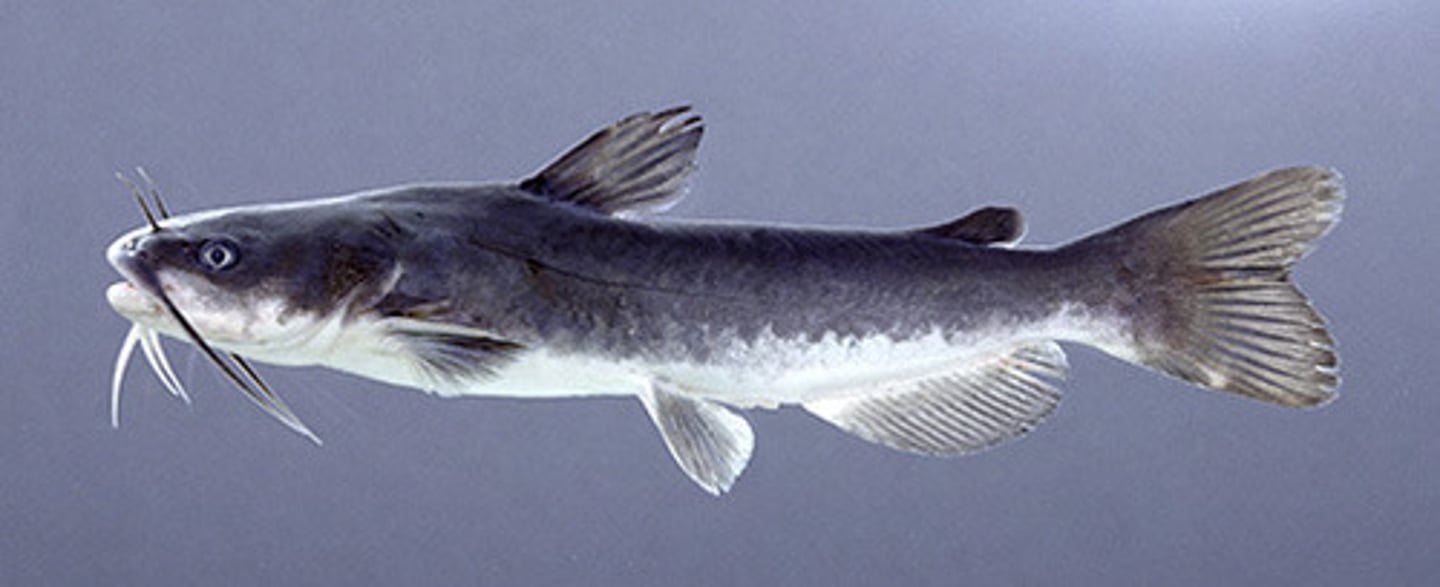
Yellow Bullhead features
- tail not forked
- light barbels
- found in pools of rivers, lakes, reservoirs
- breeding spring to mid-summer
Yellow Bullhead
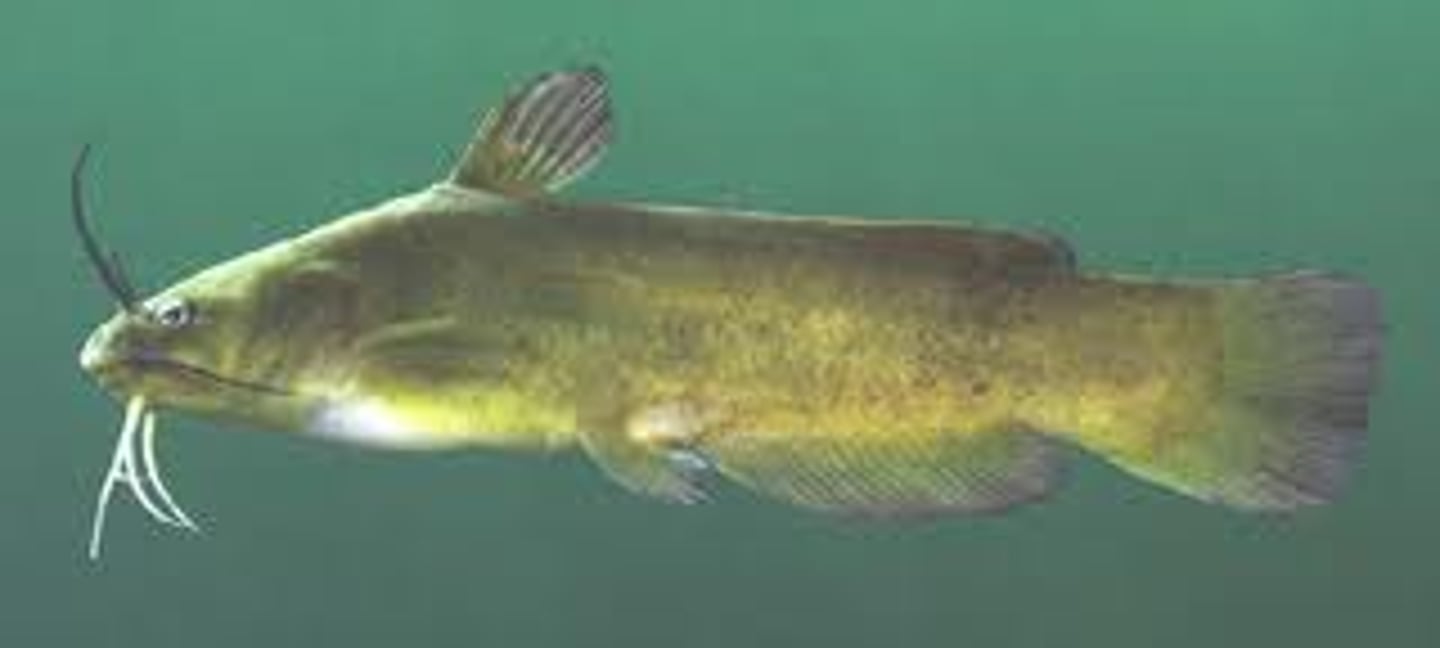
Brown Bullhead features
- throughout VA
- tail not forked
- barbels dark
- venter pale
- warm water, ponds, lakes, reservoirs
- pools of sluggish large creeks to rivers
Brown Bullhead
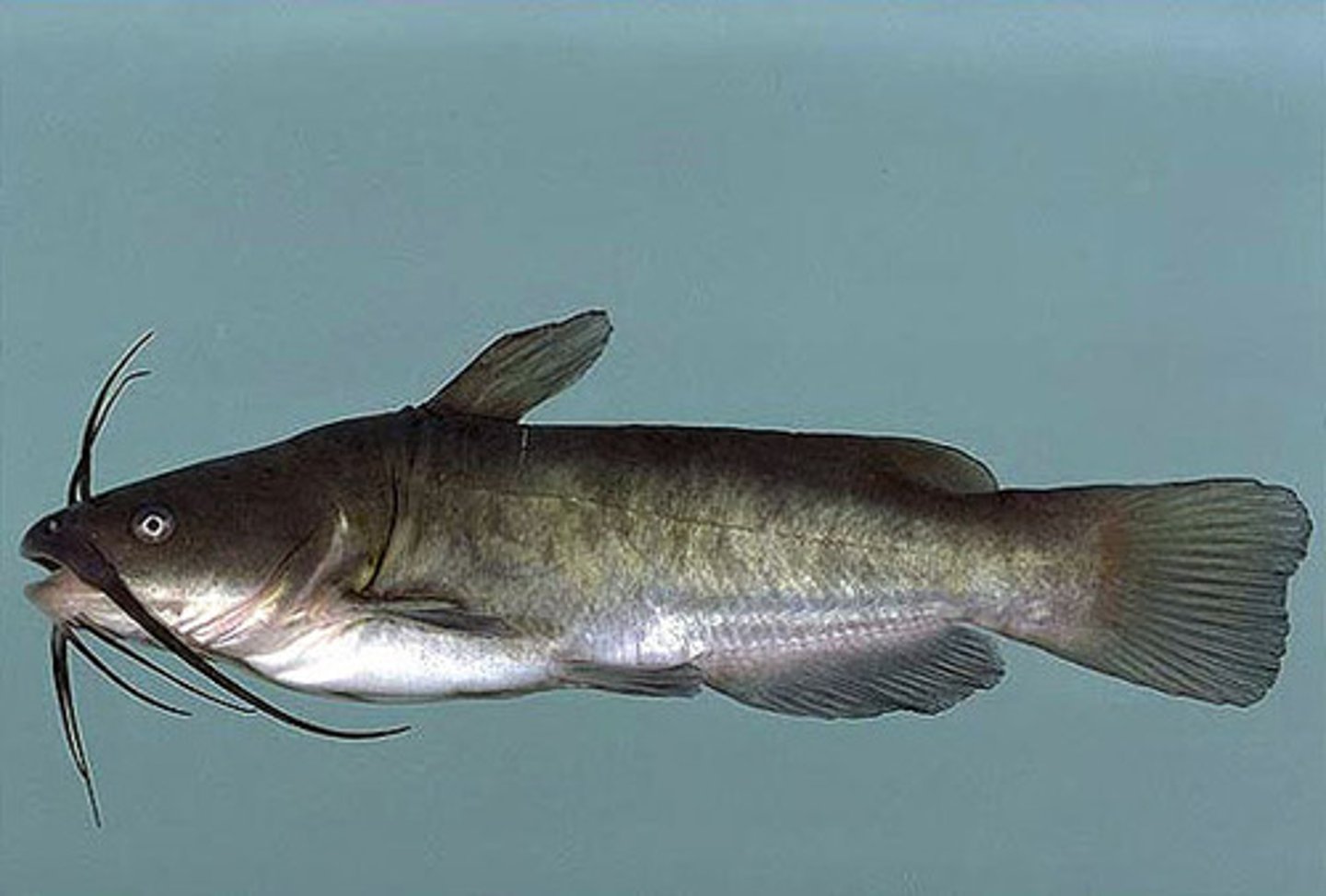
Blue Catfish features
- largest catfish species in VA
- deeply forked tail
- straight anal fin margin
- breed late spring to early summer in warm water of rivers and lakes
Blue Catfish
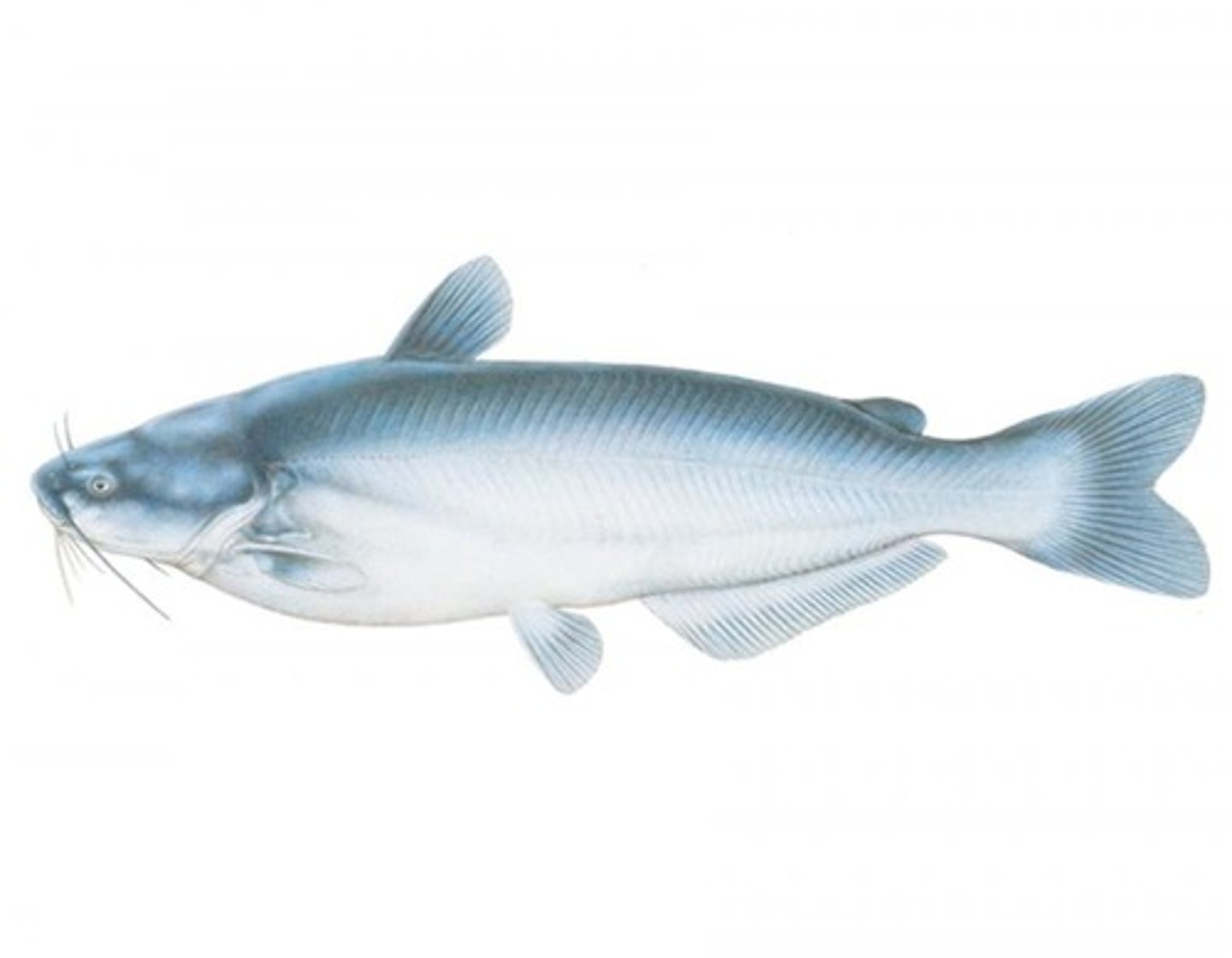
Channel Catfish features
- throughout VA
- tail deeply forked
- anal fin margin rounded
- body usually spotted
- warm water, large streams to rivers, ponds, lakes
Channel Catfish
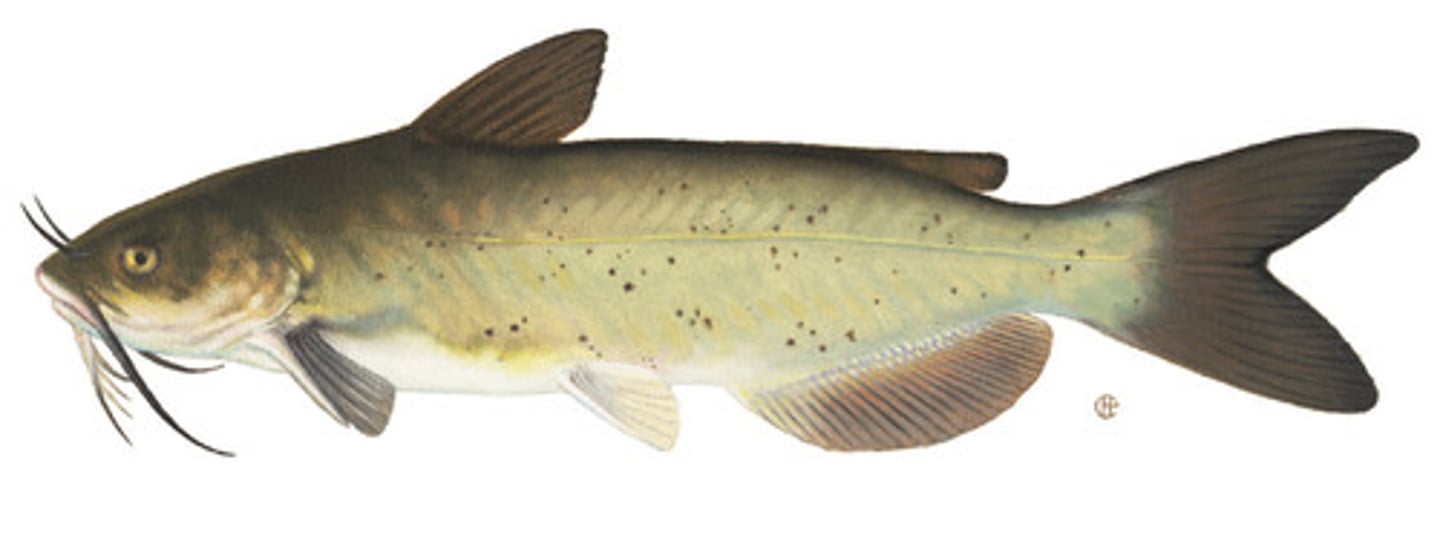
Flathead Catfish features
- introduced into large river systems of VA
- broad and flat head
- upper tip of caudal fin pale
- warm large streams, rivers, and lakes
- juveniles prefer riffles, adults prefer pools
Flathead Catfish
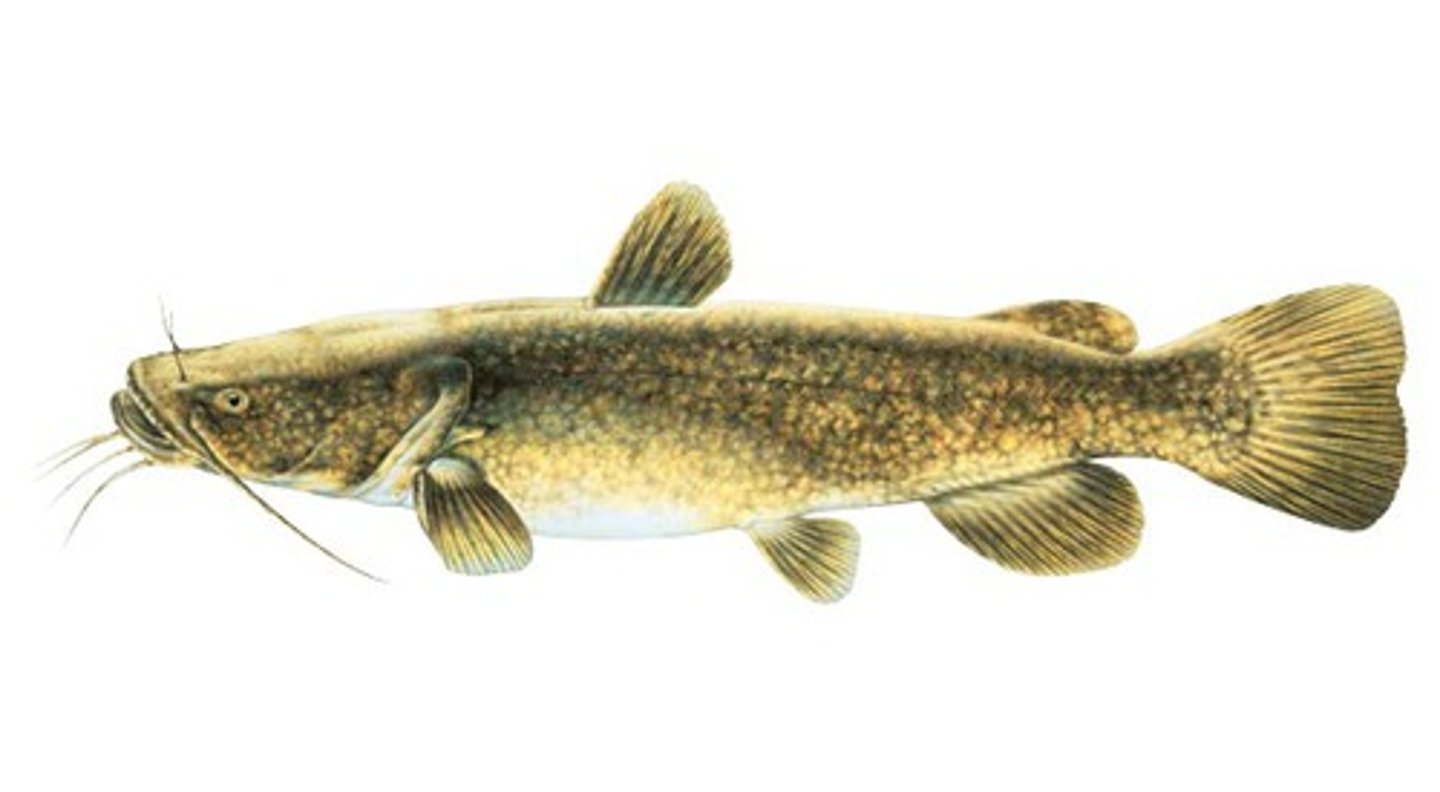
Margined Madtom features
- throughout VA
- fins usually dark-edges
- chin barbels white or brown
- low to moderate gradient sections of large creeks or rivers
Margined Madtom
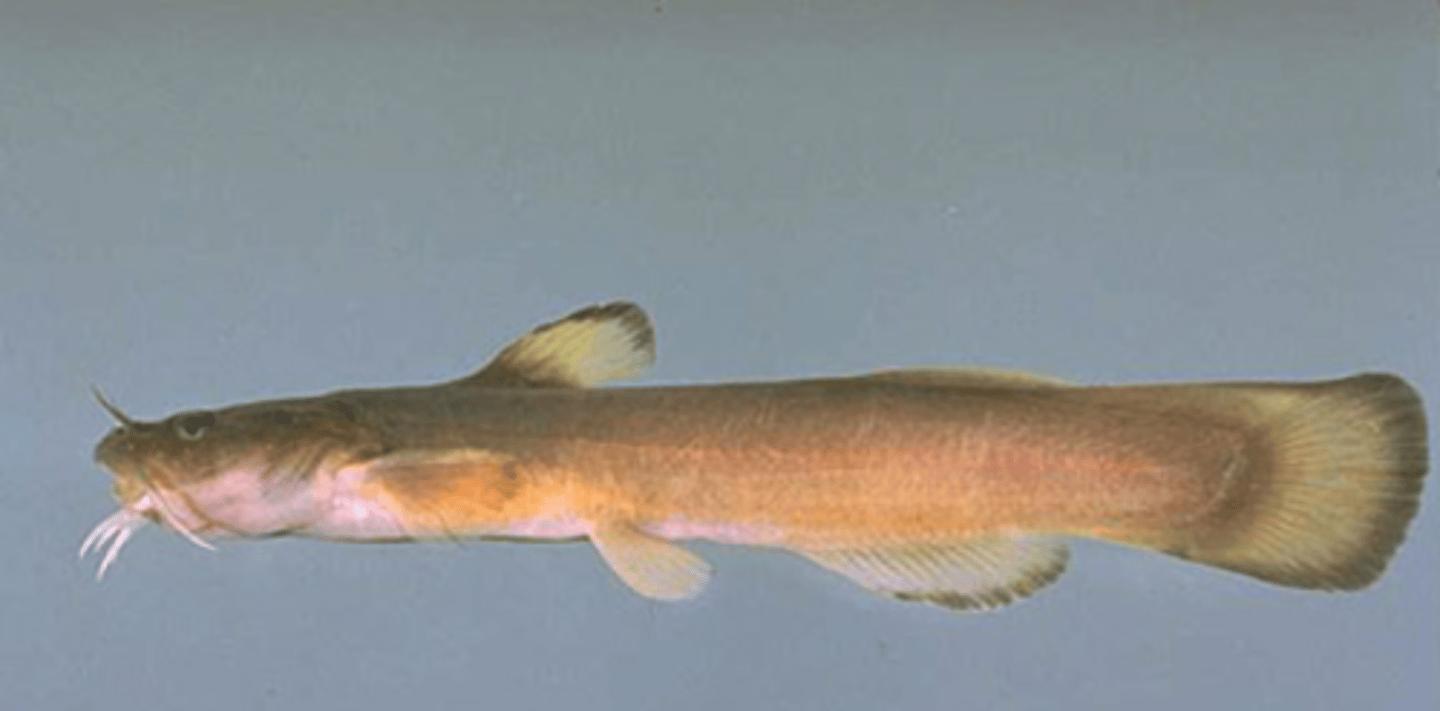
Topminnow Family
Poeciliidae
- livebearers, ovoviviparous
- male uses gonopodium to deposit sperm in female
- feed on small insects
- shallow pools
- many are invasive
Eastern Mosquitofish features
- supraterminal mouth
- posteriorly placed dorsal fin
- small
- sexually dimorphic
- mosquito larvae major prey
- lowland quiet aquatic habitats
Eastern Mosquitofish
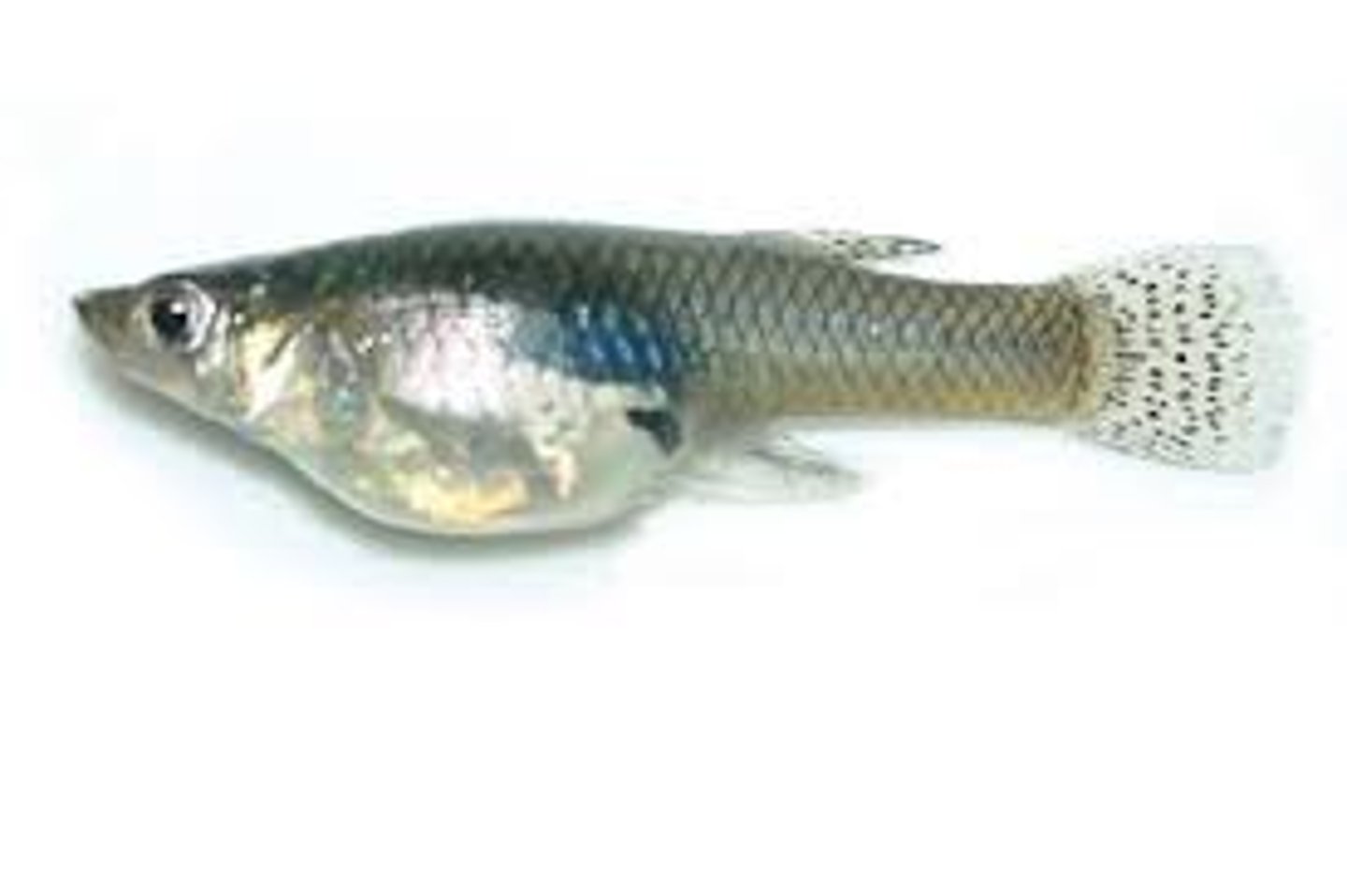
The Sculpin Family
Cottidae
- large flat heads, slender bodies
- pectoral fin enlarged
- presence of spines on edge of preopercle
- bottom fish
- eggs attached to underside of rocks or logs
Blue Ridge Sculpin features
- chin is unmottled
- first dorsal fin dark
- dark saddle markings
- cool, clear moderate and high gradient streams, creeks, rivers